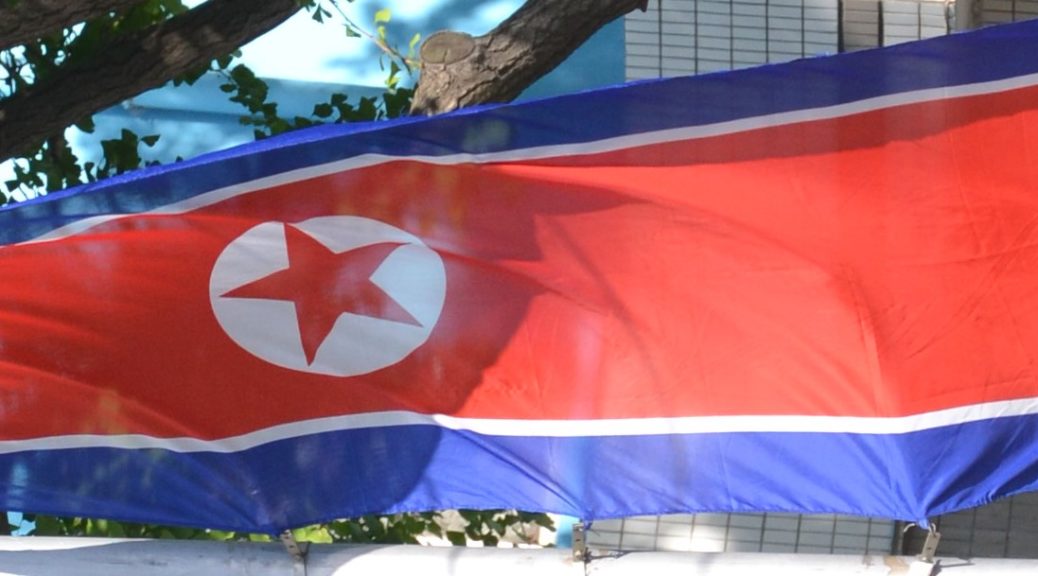
North Korea (DPRK) Travel Tips
Can you really travel to North Korea?
This was maybe the most frequent question we have heard when we told anybody about our new travel plans. North Korea (or officially the Democratic People’s Republic of Korea – DPRK) was always a dream for us since we wanted to know how this country really works and whether all the stories we hear in the Western world are true or rather fairy tales. Of course, you can not just book a flight and go to North Korea as for your usual holiday trip. To get you ready for our DPRK adventure, we will walk you through our North Korea travel tips.
We were looking for some agencies offering private tours. At the end we decided to go with Young Pioneers Tours since they were also flexible in regards of the tour program. However, we recognized during the trip that this was not just a simple warning but reality:
Due to the nature of travel/tourism in the DPRK, itineraries do not provide or imply a guarantee of the tour’s contents.
Since we are UNESCO World Heritage lovers it was a MUST to have all the listed and tentative in North Korea. The planning of our private trip was rather easy. Our dedicated colleagues from the tour operator were open to changes of the standard agenda and made every effort to adjust the agenda to accommodate with our wishes.
Getting prepared for DPRK – Behavior training
We started our trip in Beijing where we met up with our agent from Young Pioneer Tours. Before letting us go on our trip to DPRK they advised us how to behave. Some highlights we still remember:
- We strongly recommend bringing a gift for your North Korean guides and driver. The DPRK has very limited access to foreign products, e.g. local specialties, beauty products, cigarettes are all recommended (Koreans prefer Western/Japanese cigarettes to Chinese ones).
- At certain places, especially statues of the leaders, you will often bow to show our respect according to the local customs. You will also have the opportunity to buy flowers but it is not expected.
- Be nice to your Korean guides, listen to them and they will relax and let you do more.
- We are not allowed to use the local currency in North Korea (much like Cuba) so we will be using hard currency (ie. EUR, USD, or Chinese RMB). RMB is the easiest to use.
- You can take your digital cameras into the DPRK, but professional video cameras are not allowed. Please make sure there is no “GPS” printed on your camera. Your Korean guides will give you the ‘go ahead’ and the ‘no-no’ zones for taking photos – it is crucial to follow their requests.
And not to forget: the agent taught us how to bow and show respect and we had to repeat it several times until we were good to go.
But with this introduction we were best prepared to start our unforgettable trip.
Entering North Korea / DPRK
Departure in Beijing
We decided to take an advantageous way to enter the DPRK: by train from Beijing! In total this journey lasts 15 hours in comfortable night trains. The first train left Bejing in the evening and brought us overnight to the border to Dandong in the North of China.
Dandong
In Dandong we changed to a local North Korean train after passing the departure check from China. The train was completely booked by Korean people and we were with two Dutch the only tourists on this train. A big fun was the immigration in North Korea.
After passing the Chinese-Korean friendship bridge the train stopped and the train conductor collected the passports from every passenger and brought them to the immigration office. The immigration procedure took over an hour. Luckily, we were allowed to leave the train but however, not more than one meter from the train door. Looking forward to receiving our passports back and to continue our trip to the capital of North Korea Pyongyang.
Impressions from our first hours in the DPRK – taken from the train
Our itinerary in the DPRK
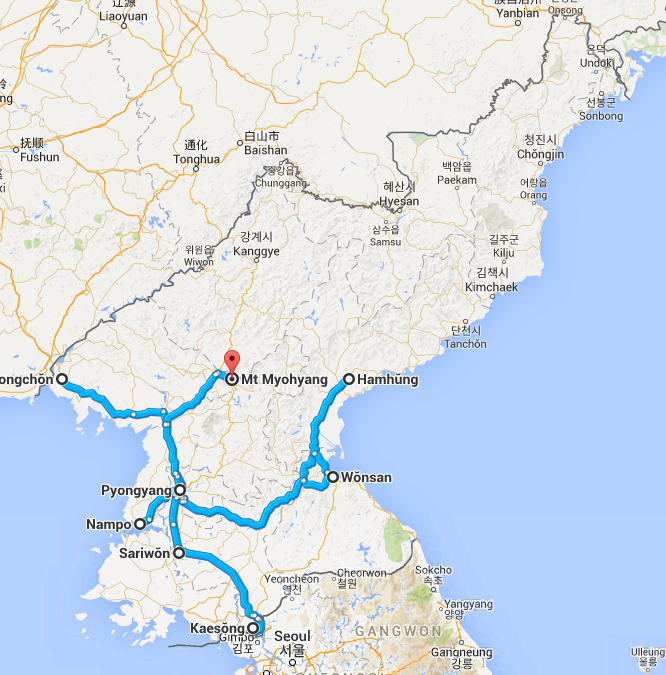
Daily life in DPRK
Despite having read a couple of books about the DPRK and of course about the poverty and the shortage in foods we did not know what to expect. Considering the fact that the guides will observe us and try to show us only the “nice” sides of North Korea, we did not really know what to think about this country: what was real, what was just because we are here now (e.g. the good mood in the orphanage and the good condition of the summer camp) and especially what do the people think? We did not try to talk to local people to not get them into trouble.
Moreover, after some days we tried to avoid talking so much about our thoughts after we have seen that our guides are writing a report every evening about the day. They told us that they rate the service quality of the attractions we have visited during the day – but we can imagine it was also about how the tourists behaved…
How to move around in DPRK / North Korea
Since we have booked a private tour, we had two English-speaking tour guides (one male, one female) and a driver. These three were our guides through the entire tour. The streets were fairly empty but due to the conditions of the highways that link the cities our van was not going more than 50 km/h.
Koryo Hotel
Arriving in Pyongyang at the train station, it was not hard for our guides to identify us as their tourists due to minimal number of foreigners in the train. We were happy arriving after 7 hours in a train with quite drunken Korean people. In addition, we were looking forward to getting to know the popular Koryo Hotel.
We can really recommend the Koryo Hotel – it was very clean and sufficient for the six nights we stayed in total here. Since it is not allowed to leave the hotel by yourself, the hotel also has a mini market with touristic food products like Nutella. We used to buy bottled water there.
Highlights to explore in Pyongyang
Ryugyŏng-Hotel
This impressive skyscraper is being built since 1987 and should have been with 330 meters the highest hotel in the world. At the time we were in DPRK the outside of the skyscraper was finished but it was said that there is nothing inside.
Main train station
The train station is especially at night a beautiful building. Every morning and evening the song “Where Are You, Dear General?” is blasted over a speakers at the station.
Grand People’s Study House
We spent the first two days in Pyongyang. The first item on our agenda was Grand People’s Study House. It is a library and academic center for adult learners. This grand building is built in the Korean style. From the balcony we had an impressive view over the central square with its governmental buildings.
Mansudae Grand Monument / Mansu Hill Grand Monument
On 9th September – the National Day in DPRK – we visited in the early morning the Grand Monument of the leaders Kim Il Sung and Kim Jong Il. These statues are maybe the best-known picture from DPRK. With a height of 20 meters the bronze statues are impressive. Here we had the first opportunity to show our learned bow.
Pyongyang Metro
Another highlight in Pyongyong is a ride with the metro. Korean people are very proud of their metro and the stations are very beautiful decorated – at least the three stations we were allowed to enter and to stop there. The metro trains are partly imported from East Berlin and we have seen still German signs inside. Above all, the metro seems to be a popular as a mobility because the metro during lunch time was crowded with Korean people.
Mass dance at the Arch of Triumph
The last stop was at the triumphal arch in Pyongyang. It is said to be the largest victory arch on the planet. This one celebrates the victory over the Japanese and the return of the general Kim Il Sung to his home town. In the park next to the triumphal arch
Juche Tower
On the other side of the River Taedong – opposite of the Grand People’s Study House – we have visited the Juche Tower. This tower was built for Kim Il Sung’s 70th birthday and it is with its 170 meter said to be the tallest made of stone in the world. The entrance of the tower contains many labels from supporter of the Juche Ideology and study groups. We have taken the elevator to the top and had an impressive view all over Pyongyang.
Korean War Museum & USS Pueblo
One point on our travel itinerary we were not able to cancel was the visit of the Korean War Museum and the USS Pueblo. The USS Pueblo is the only ship in the world that is still held by a foreign nation. USS Pueblo was captured in 1968 by North Korea.
Kumsusan Palace of the Sun / Mausoleum of the Great Leaders
In the mausoleum the embalmed bodies of Kim Il Sung ans Kim Jong Il are laid out. For this special visit we had to dress up formally by wearing a tie and dress shoes. As the other memorial places in the DPRK the Palace of the Sun is absolutely clean, without any power outages and with air-condition. Pictures are unfortunately not allowed inside and we had to undergo strict security checks. In the rooms with the embalmed bodies we had to bow three times for each leader – one time on the left side, the other time on the right side and at the end in front of their feet. The other rooms of the palace show the official car of the Great leader (it was a Mercedes) and the train in which they used to travel to China.
Pyongyang Fun Fair
North Korean love adventure and fun. Hence, they were very proud so show us their fun fair and we had to try it. We have experienced already in our first days in Pyongyang power blackouts. Therefore, it was hard for us not to image a blackout when sitting in one of the fun rides. One thing we will never forget was one attraction this was so wired to us that we have not even took any picture: we also had to visit a shooting range but instead of shooting at paperboards they offered us to shoot real chickens… To the surprise of our guides, we resolutely refused this.
Demilitarized Zone (DMZ)
Travelling to Kaesong was our first trip outside the capital Pyongyang. Roads are like in Soviet countries – several lanes in both directions. But with many holes and almost nobody on the streets. I guess that the van was not going faster than 30 km/h. The DMZ divides the Korean peninsula roughly in half and is approx. 250 kilometers long. This corridor between North and South Korea is about four kilometers but you can see the South Korean flag. Though the zone is demilitarized, the border beyond that strip is one of the most heavily militarized in the world. Before entering the DMZ we had to leave our van and to change to a military bus. Even our guides had to present their ID cards at this checkpoint. During the procedure of analyzing our passports, we used the chance to buy propaganda posters and postcards.
In front and behind the blue small barracks are buildings with terraces from each country. Inside the building on the North Korean side there is table that is also divided in a North and South part through the speaker cable. The photo with the soldiers was only possible because our guide gave him some cigarettes.
Kaesong
The city of Kaesong awaited us with a lot of high-rise living buildings. But Keasong also has something like an old town with traditional Korean houses and one part being the Kaesong Folklore Hotel.
Historic Monuments and Sites in Kaesong (UNESCO World Heritage)
The geomantic layout of the former capital city of Kaesong, its palaces, institutions and tomb complex, defensive walls and gates embody the political, cultural, philosophical and spiritual values of a crucial era in the region’s history. Situated in Kaesong city the site consists of twelve separate components, which together testify to the history and culture of the Koryo Dynasty from the 10th to 14th centuries. The site was added by UNESCO to the list of world heritage sites in 2013 for testifying the transition from Buddhism to neo-Confucianism in East Asia and to the assimilation of the cultural spiritual and political values of the states that existed prior to Korea’s unification under the Koryo Dynasty.
Sariwon
On our way to the beach in Nampo we stopped for an overnight in Sariwon. We walked up the hill in the local folk custom park and enjoyed the view from the mountain top pagoda.
Nampo
Orphanage visit
Nampo in the west of the DPRK due to being just 55 km away from Pyongyang is from strategic importance. We visited an orphanage in Nampo and brought a lot of gifts to the kids living here. We hope that the kids are so happy as it looks like and the toys and gifts we brought, could be really used by the kids. Of course, pictures of the Great Leaders are also hanging in each of the rooms in the orphanage.
Our driver had issues finding the orphanage. Therefore, while driving through the city we have taken some pictures.
West Sea Barrage
Nampo is also famous for the West Sea Barrage. This barrage with its 15 kilometers is an outstanding example of socialist construction. The barrage was built to keep the salty water of the west sea from the rendering parts of the Taedong river and the surrounding farmland. A little island is integrated into the barrage with a light house in the shape of an anchor. Of course, guess what, a monument of the leader must also be located on this island.
Complex of Koguryo Tombs (UNESCO World Heritage)
Of course, one mandatory item on our itinerary was also the second listed UNESCO World Heritage of the DPRK: the Koguryo tombs. Several tombs from the later period of the Koguryo Kingdom are located in this area. These tombs are almost the only ones from that time. Some of them have walls paintings inside. However, entering one tombs costs 100 Euro per person. We refused to go inside and took pictures from the images the local guide has shown to us to get a better picture of how they looked inside.
Sparkling water production
We were allowed to visit a sparkling water production in North Korea. To ensure the cleanness, we were advised to wear work coats . You can see the whole production lane on our pictures. The glass bottles were falling several times in the lanes and despite the sanitary principles our guides have taken the bottles out or ordered them with their hands.
Hamhung
Fertilizer Factory
Similar to the sparkling water factory in Nampo, we visited in Hamhung a factory that we built decades ago. However, this factory is still operating and produces fertilizer for the farmers – this is at least what they told us. In our travel guide we have read that the factories in Hamhung are also used for the production of chemical weapons. Impressive to us were these old machines and operating rooms to monitor the production process – like going back in time for more than a half decade.
Historical House of Ri Song Gye
Besides a walk through one of the parks in the city and the Tonghung hill we visited the historical home of the usurper of the Koryo dynasty and Ri dynasty founder. Hamhung also has the largest theater in the DPRK.
Wonsan
In Wonsan we visited a recently renovated holiday camp (Songdowan International Children’s Union camp). This really beautiful camp is used for the children of party’s people. Really impressive however, we haven’t seen any children here. Maybe nobody was there due to our visit outside the holiday season.
Mount Myohyang
Friendship Exhibition
One of our highlights of the tour was the friendship exhibition. In two huge buildings all presents the DPRK’s leaders have received from other people, governments and institutions are presented here. This should show to the people how popular the leader of the DPRK is in the world. Unfortunately, it is not allowed to take pictures inside. It is not possible to visit the whole exhibition due to the many presented and you have to choose two continents at maximum.
Buddhist temple (Pohyon Temple)
The Pohyan Temple is one of the largest Buddhist temples in DPRK. It was founded under the Koryo dynasty at the beginning of the 11th century.
Ryongmum Cavern
Ryongmum is a lime cavern in an area which belongs to Outer Myohyang. The cavern was formed for a long time by water-soluble lime underground and is illuminated very colorful that creates a wonderful atmosphere. It has two main caverns and tens of side caverns. The drip-drops from the ceiling created scores of multifarious sights.
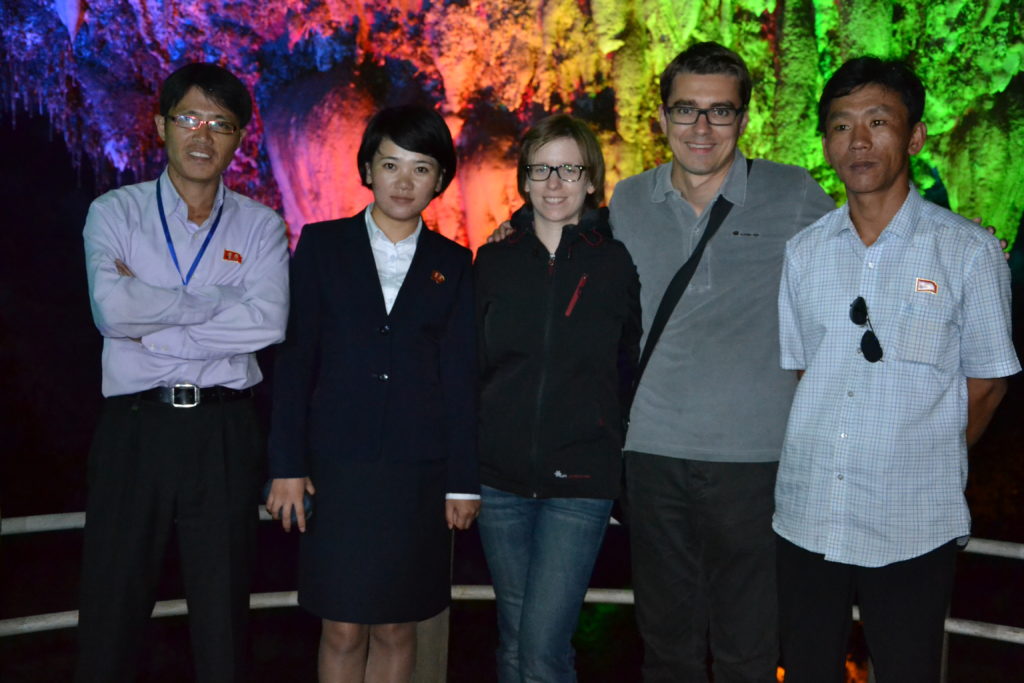
Our Hotels in the DPRK
In Pyongyang we always stayed in the Koryo Hotel. The hotels outside from Pyongyang were completely fine and clean. Despite that we didn’t have power and fluent water in the rooms itself. We will never forget the hotel in Wonsan where my husband “borrowed” a towel from the hotel. After leaving the hotel room the service team directly checked our rooms. Detecting that one towel is missing we had long discussions and paid at the end 2 Euros. It almost evolved in an act of state – unbelievable since the towels in the hotels were all quite old.
Flying back to Beijing
The last adventure of our really impressive and unforgettable trip to North Korea / DPRK was how we got back to Beijing. Due to entering via train we decided for the quickest way to get back – the plane. Not sure how this has happened but I didn’t realize with which flight company we are flying: Koryo! The flight only lasts approx. 2 hours but I was not sure whether we will arrive in Beijing. We were the only tourists on the plane. When it was coming to complete the immigration for China on the plane, the Korean people asked me whether I could help them since it was in English and in Chinese.
Food and beverages in North Korea / DPRK
On top of our North Korea travel tips, we also want to share our food adventures with you. For our whole trip the meals were pre-arranged and we always had breakfast at the hotel and lunch as well dinner in some restaurants. We always received so much food we were not able to eat and it was really a pity sending it back having heard that people are starving.
Beverages
The traditional drink at DPRK is Soju – a kind of rice liquor. Our guides drank this during lunch and dinner. In addition, beer is very popular and only available in large bottles.
Korean Hotpot
We are really hotpot / fondue lovers and one of the first hotpots we were enjoying abroad was in Pyongyang. Everybody received his own pot so we have cooked the raw fish as long as possible.
Duck BBQ
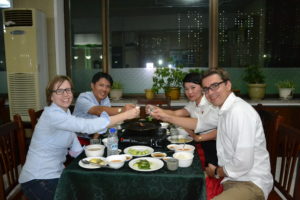
Traditional Korean Pansangi
In Kaesong at Thongil Restaurant they served us traditional dishes in small bronze bowls (Pansangi). Besides Kimchi we tried different fermented vegetables and fried fish. In addition, Paul ordered a dog soup – I refused to try but he told me that it tastes like chicken.
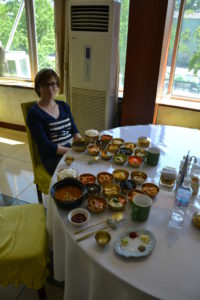
Clam BBQ
At Nampo, our guides decided to have a BBQ in front of our bungalow. We do not know where they have found the clams but to have fire they have taken out petrol from our van and put over the clams. However, this was one of our best fish.
Pizza
One really strange experience was the dinner in an Italian Pizza restaurant in Pyongyang. It is said that the ingredients are imported directly from Italy and the cook is making the best pizzas. The specialty in this restaurant was chocolate pizza!! This was really special – cheese pizza with a kind of chocolate. But in this restaurant, real coke was served. The first time we have seen this in a restaurant in the DPRK.
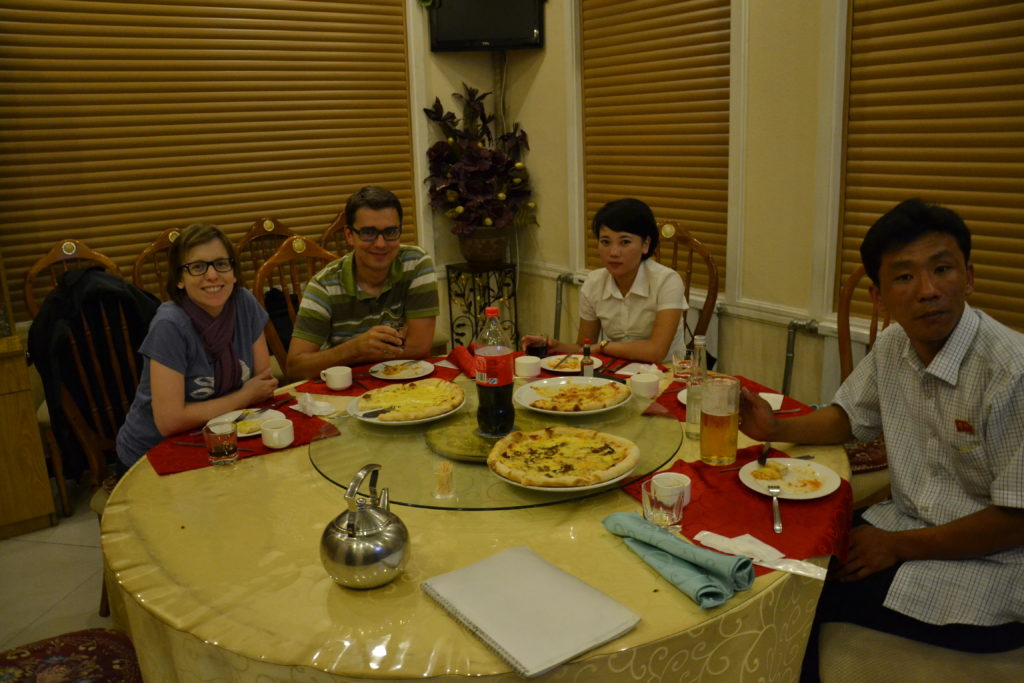
Our recommendations
Travel guide
As a travel guide and excellent source for North Korea travel tips we can recommend the one from Trescher – our guides (despite pretending not to be able to speak German) looked through our travel guidebook. We have read before that not every travel guidebook is approved to take into the DPRK but with this one we did not had any issues:
Pre-reading
As mentioned, we have read a couple of books before booking the tour to get a kind of a feeling what to expect. Here are the ones we enjoyed reading:
Explore further countries:
Continue reading in the most popular blogs:
- Our travel packing list
- Slovenia and Austrai travel tips
- Georgia travel tips
- New Zealand travel tips
- North Korea (DPRK) travel tips (DPRK)
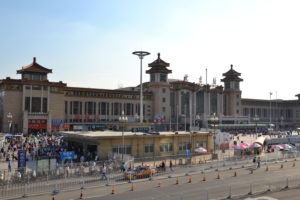
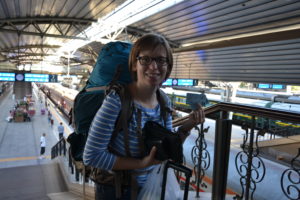
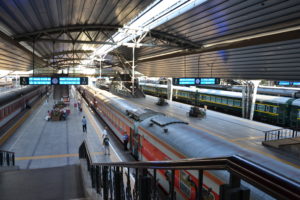
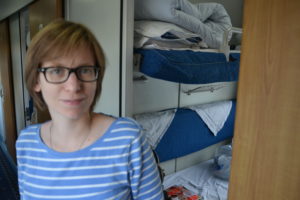
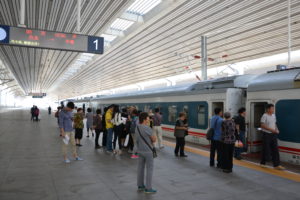
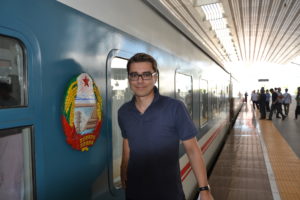
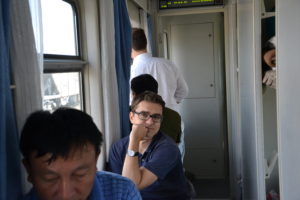
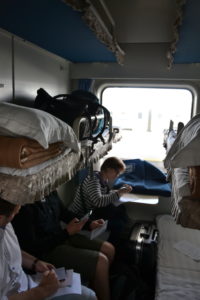
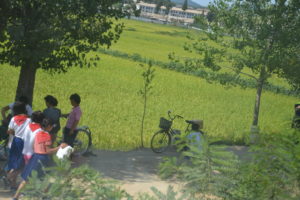
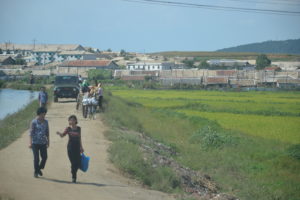
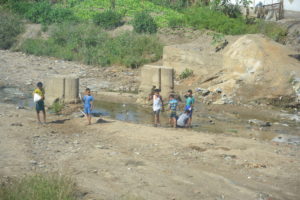

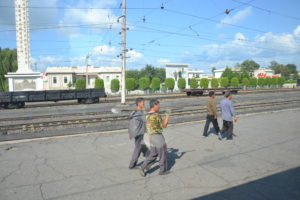
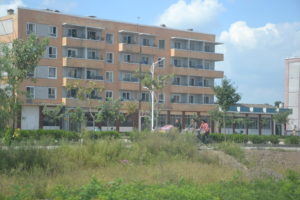
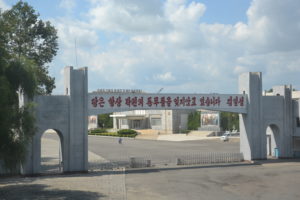
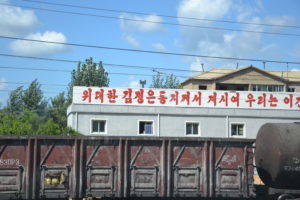
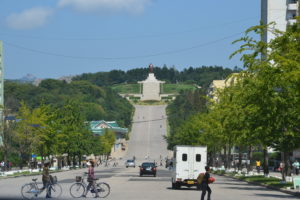
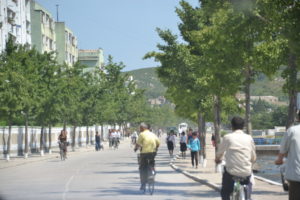
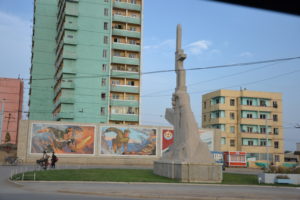
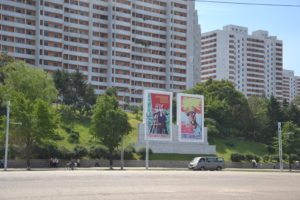
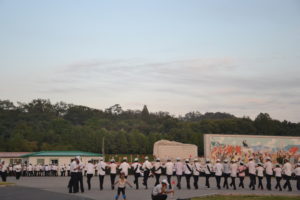
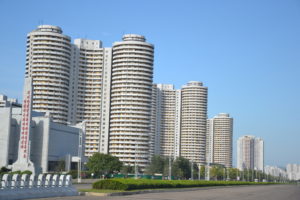
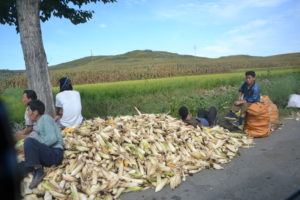
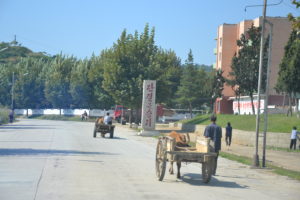
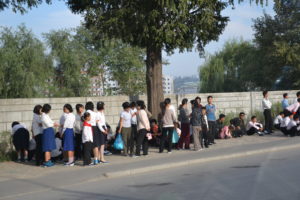
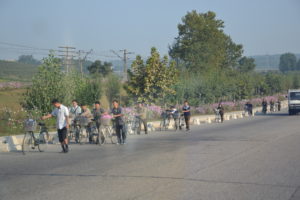
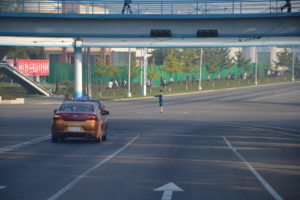
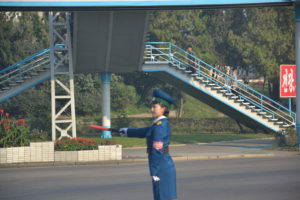
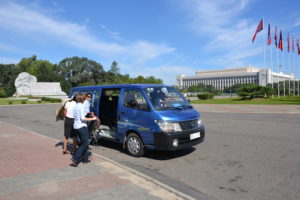
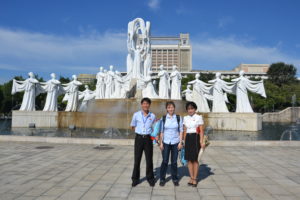
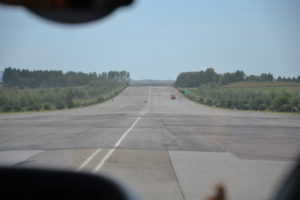
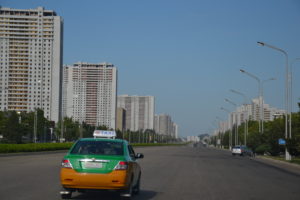
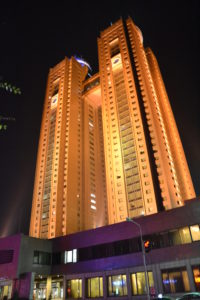
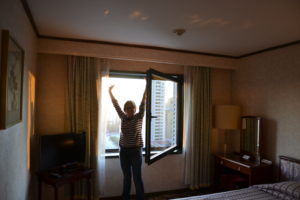
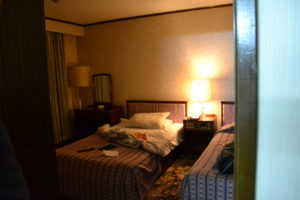
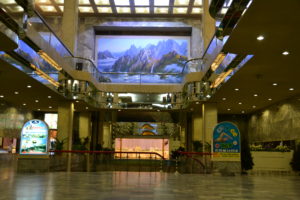
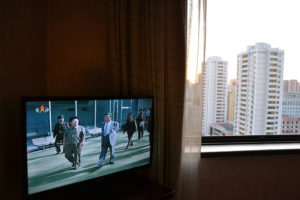
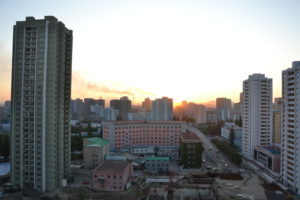
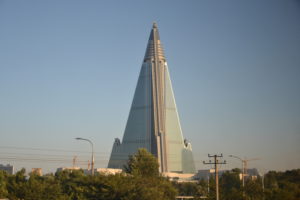
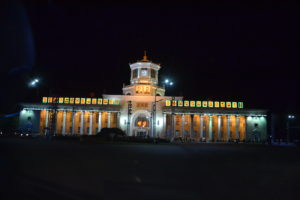
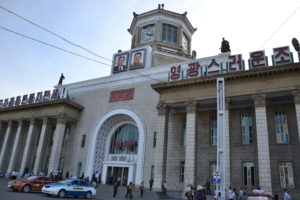
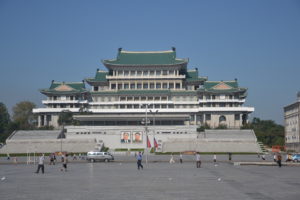
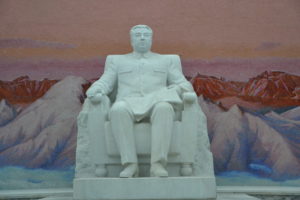
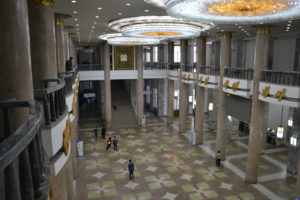
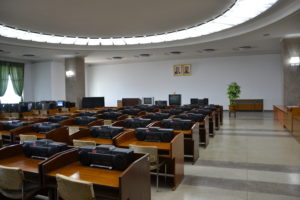
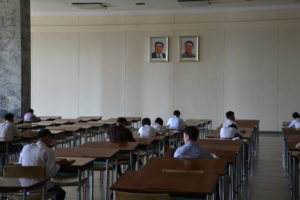
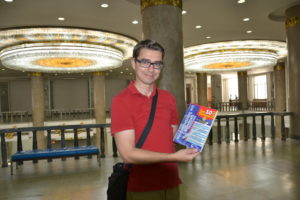
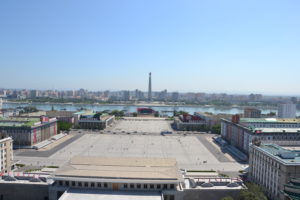
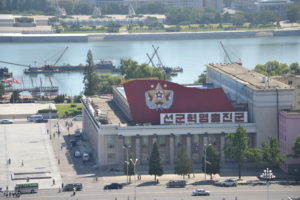
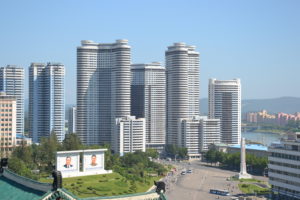
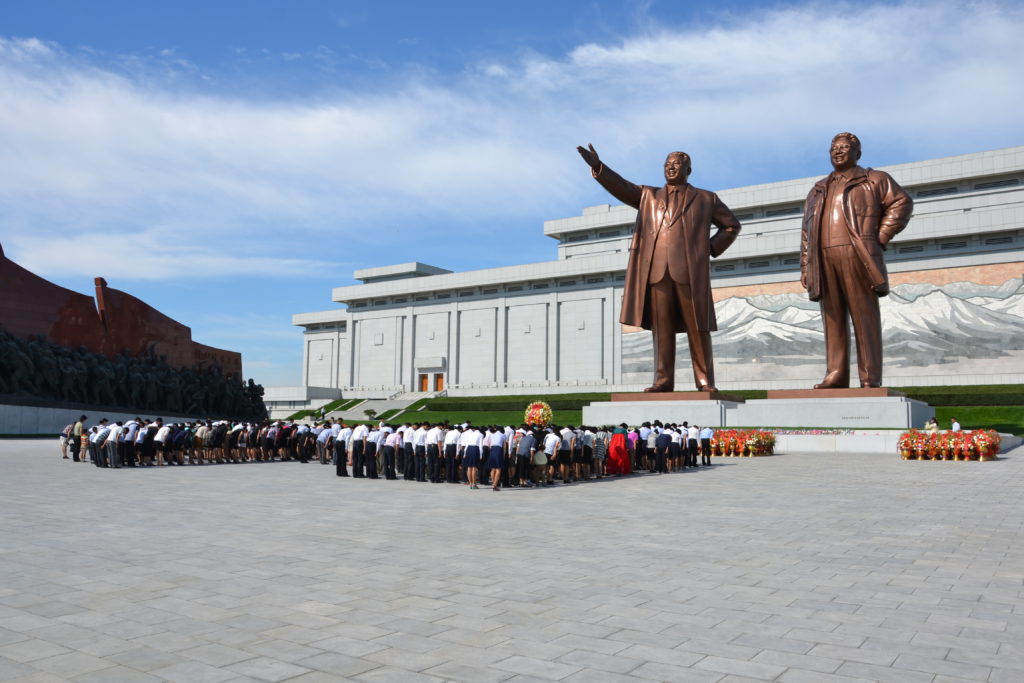
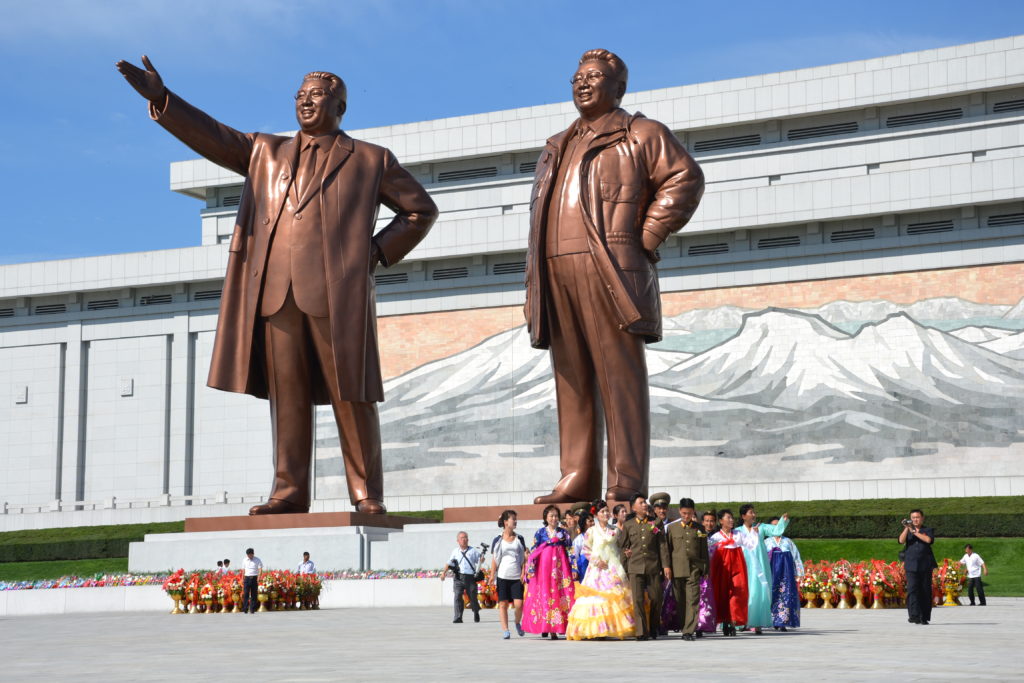
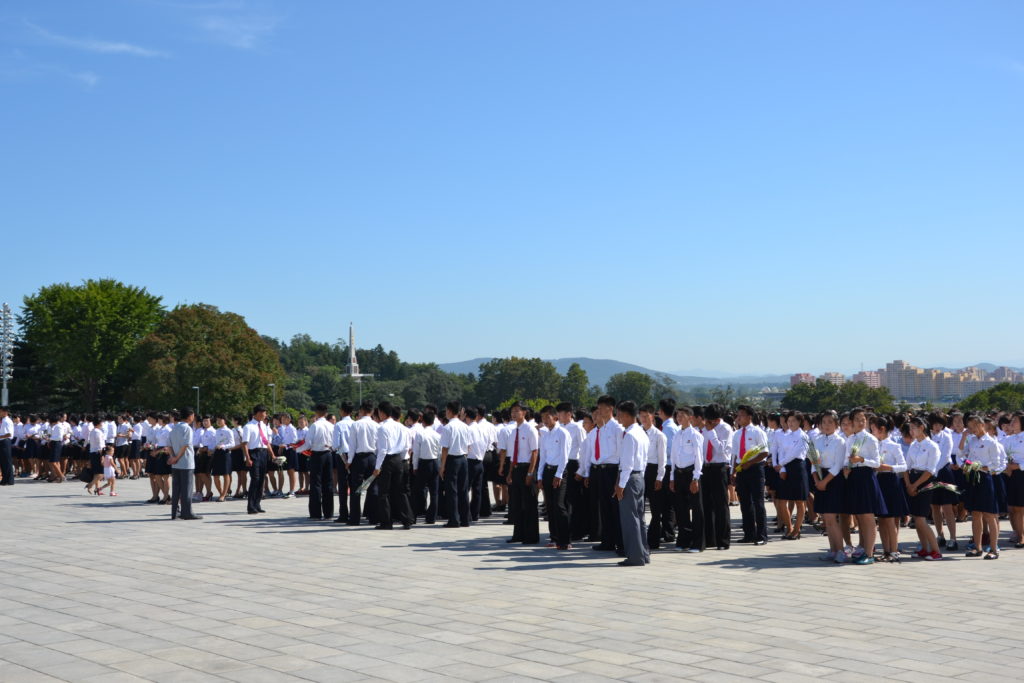
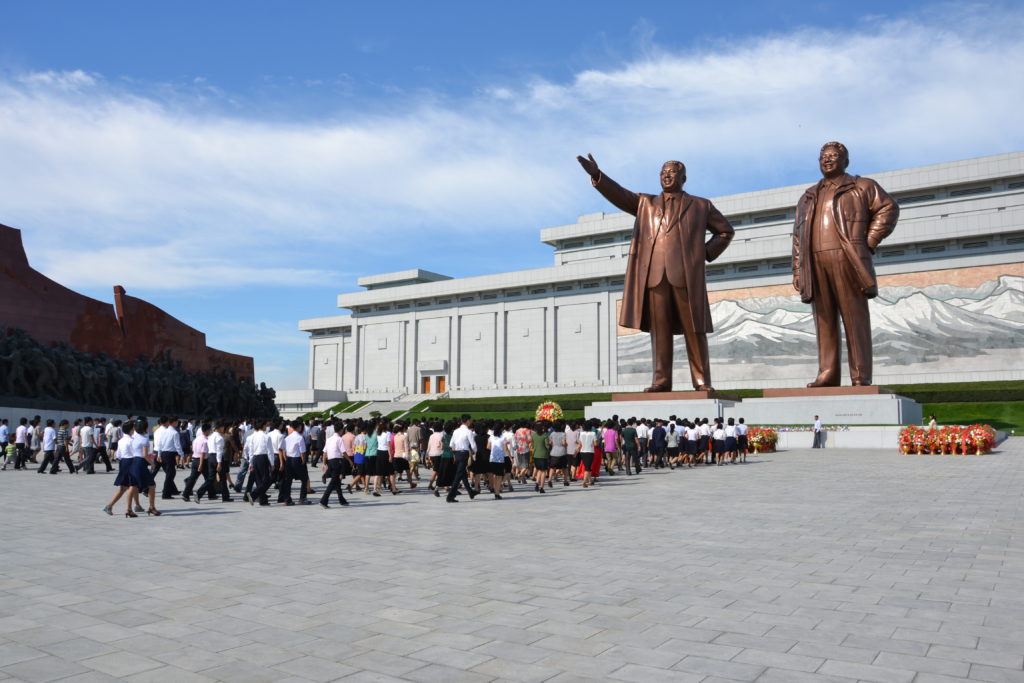
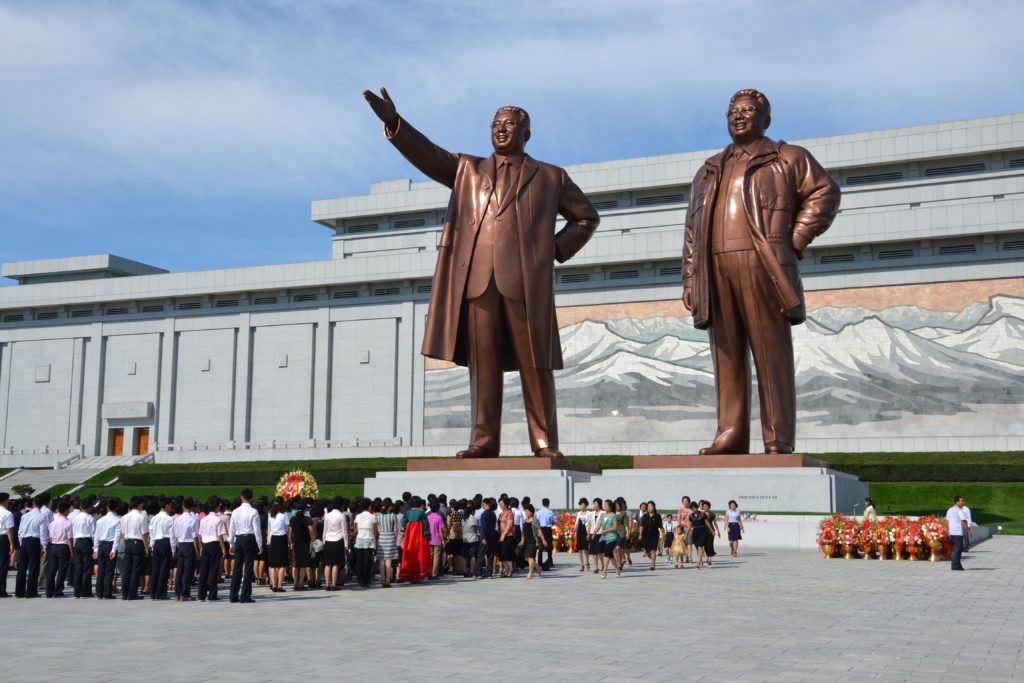
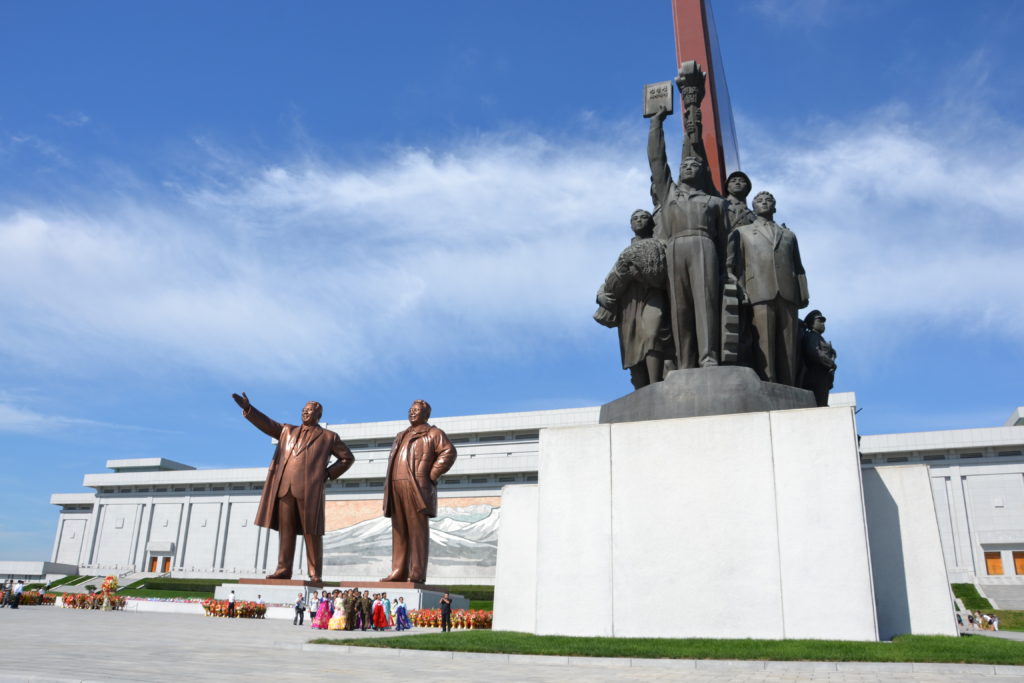
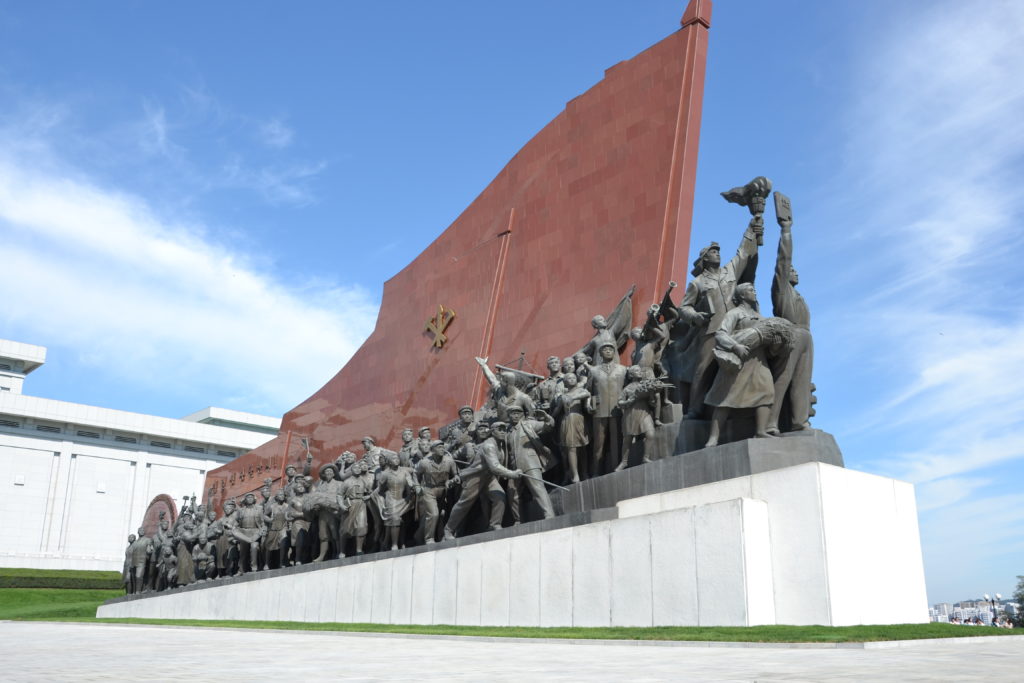
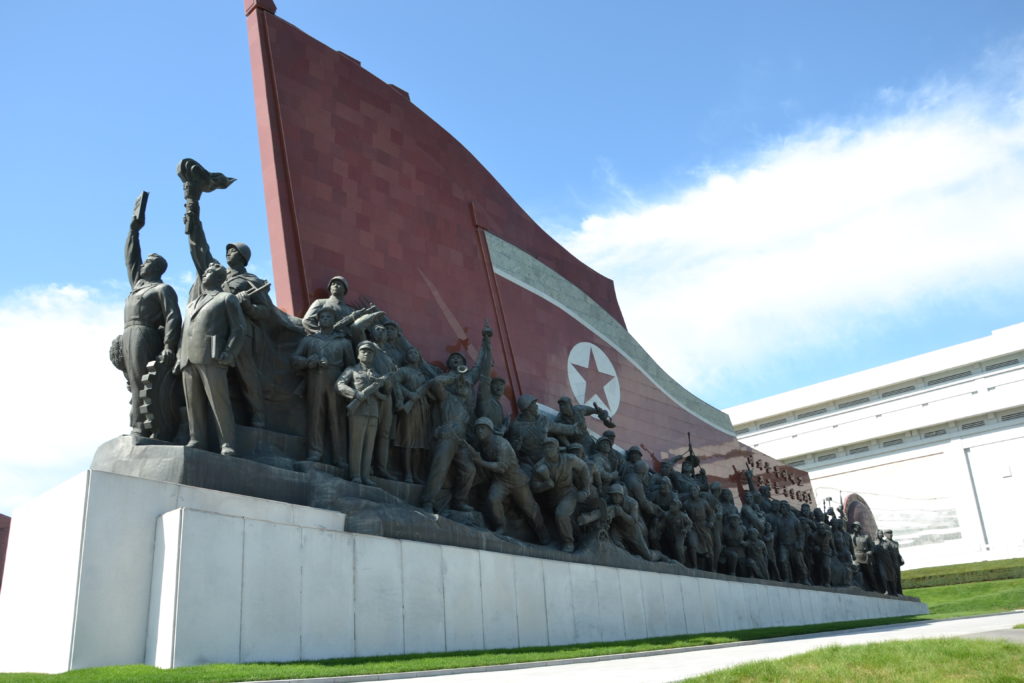
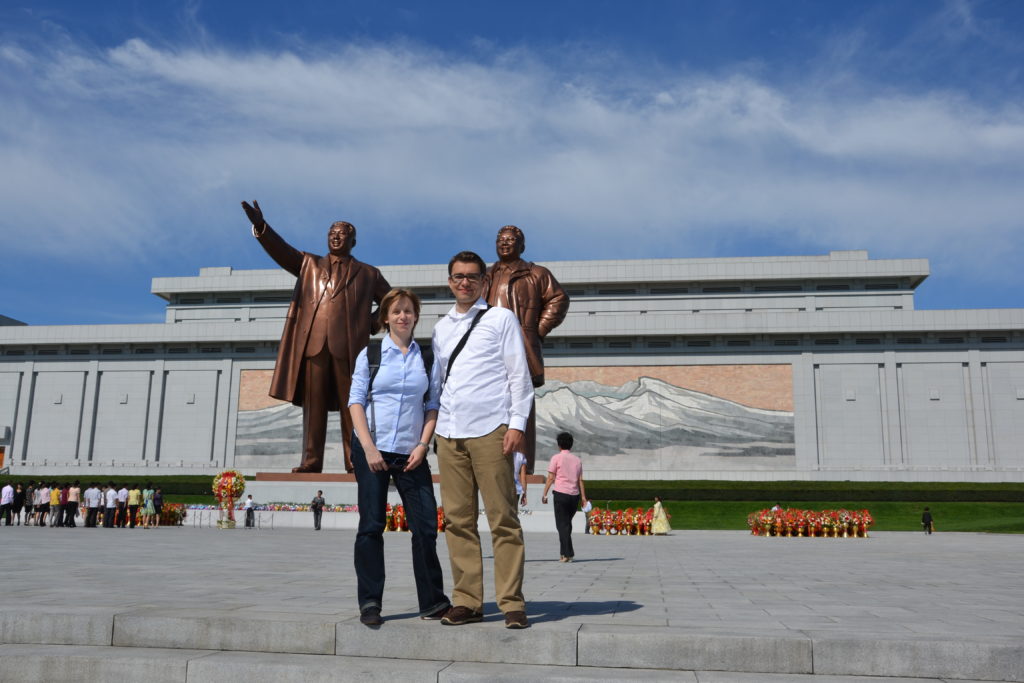
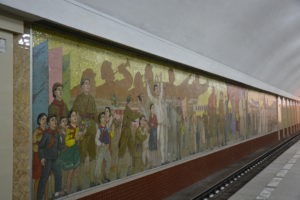
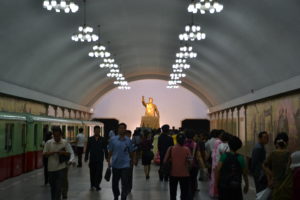
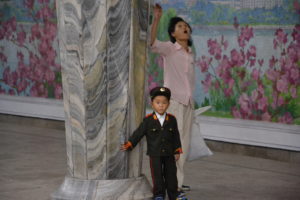
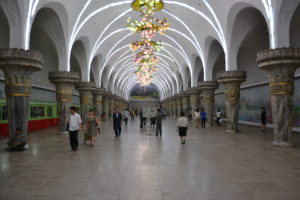
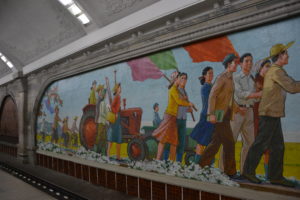
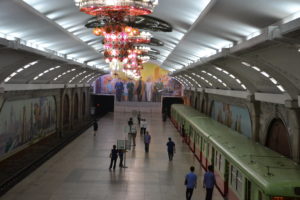
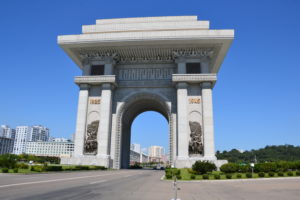
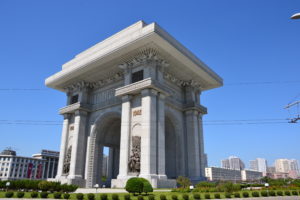
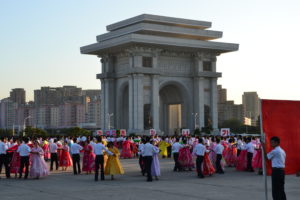
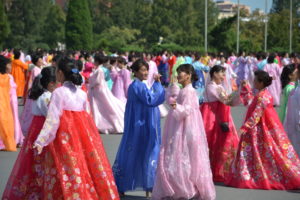
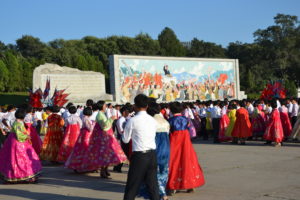
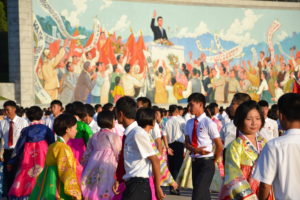
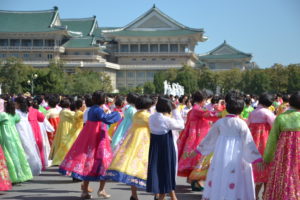
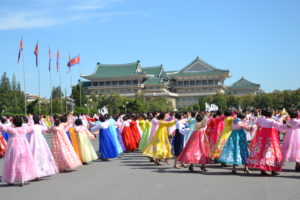
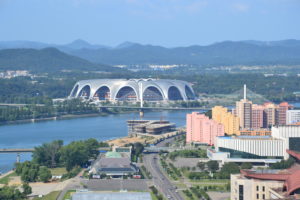
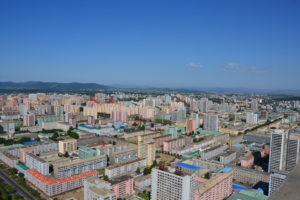
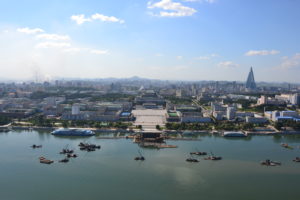
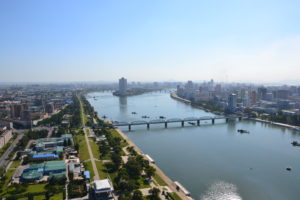
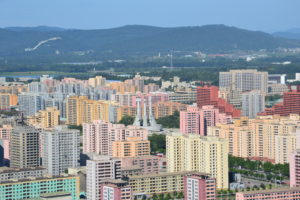
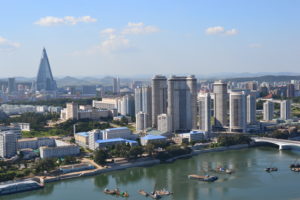
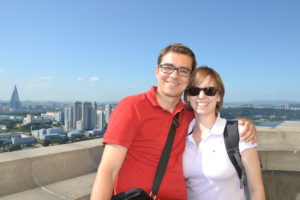
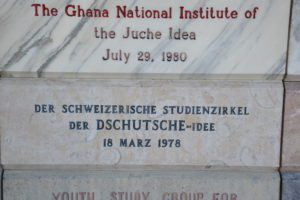
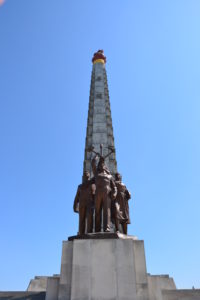
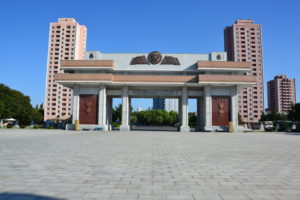
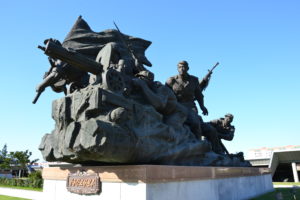
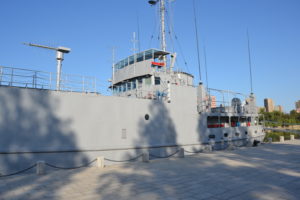
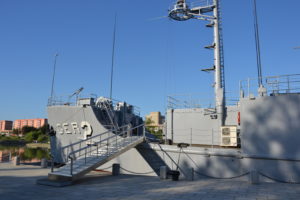
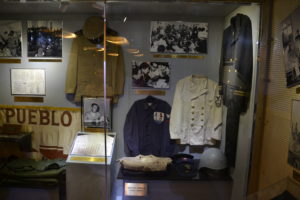
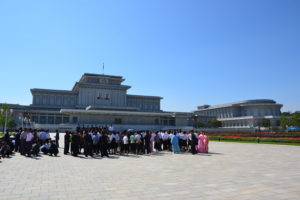
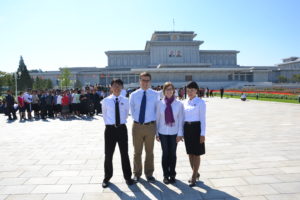
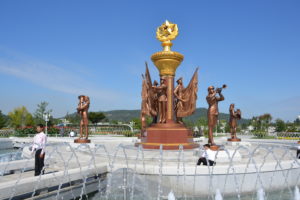
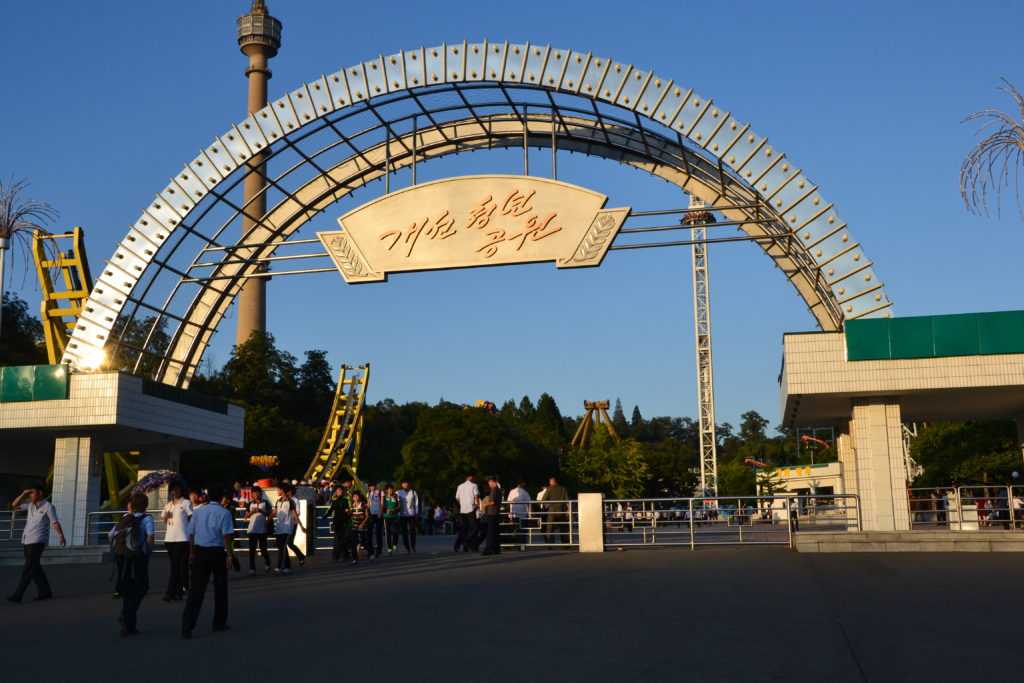
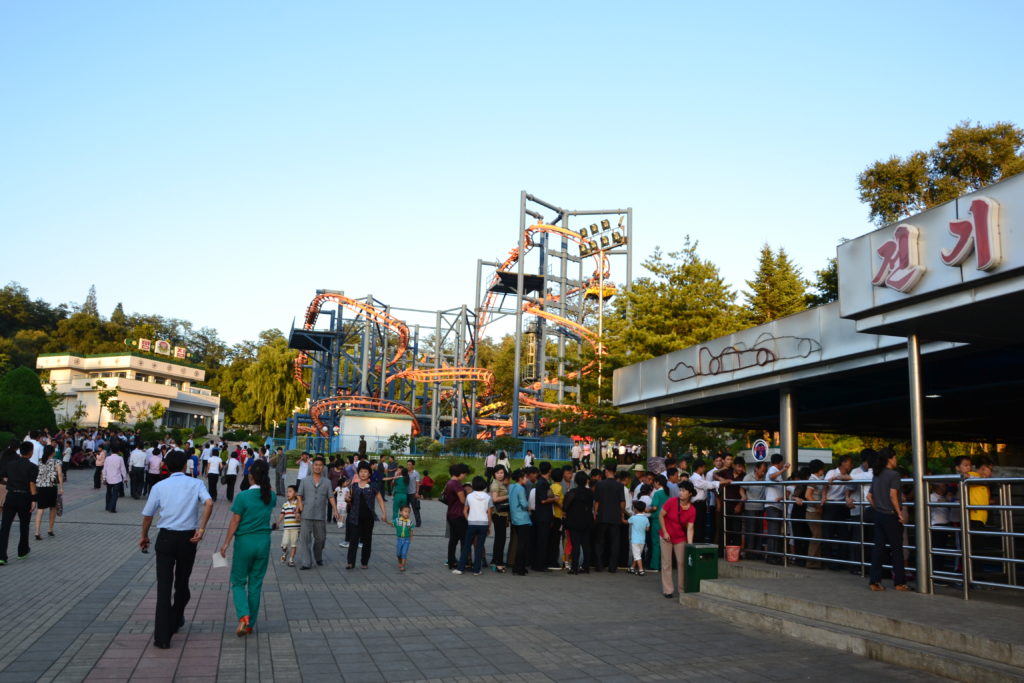
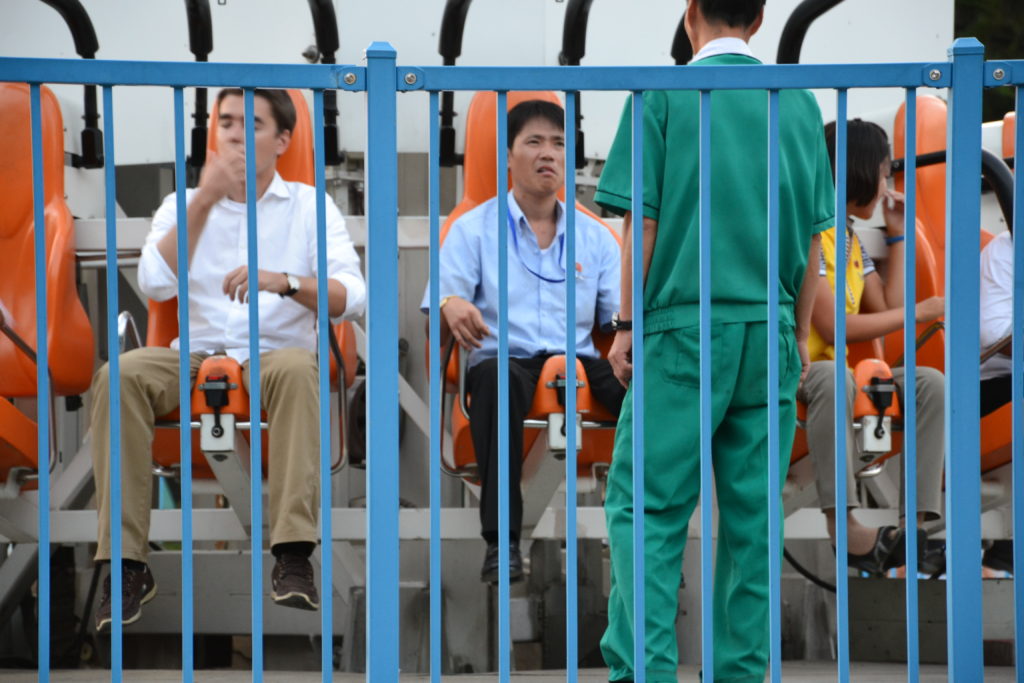
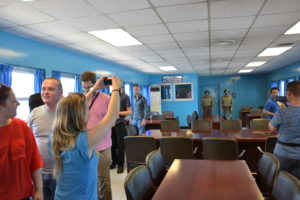
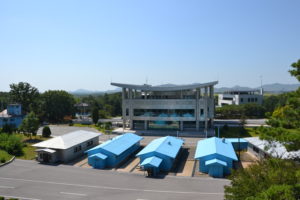
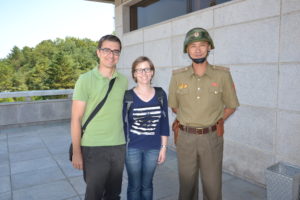
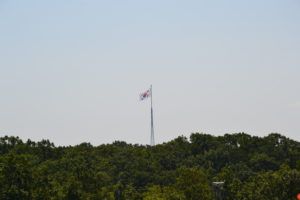
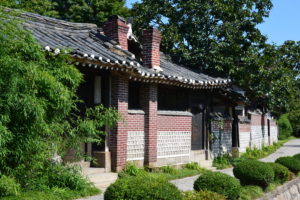
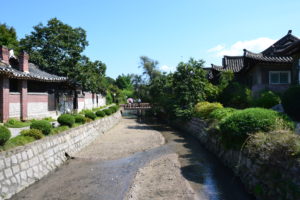
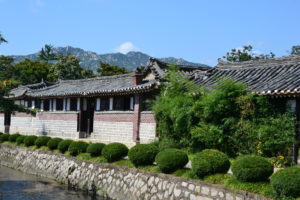
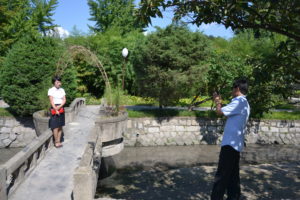
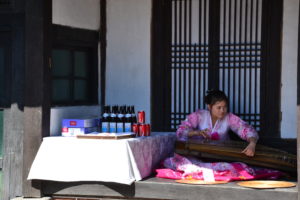
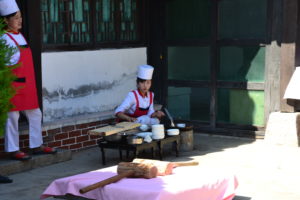

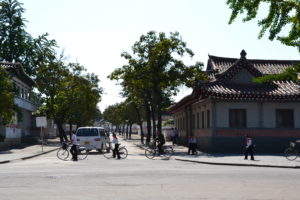
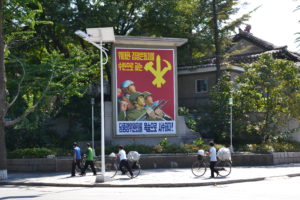
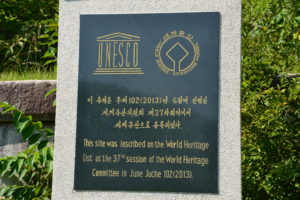
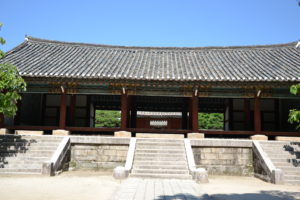
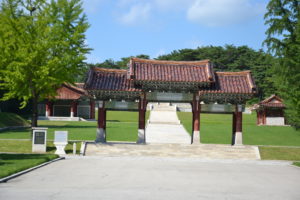
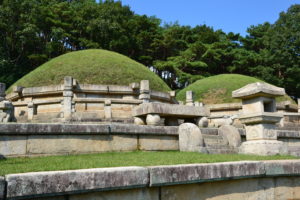
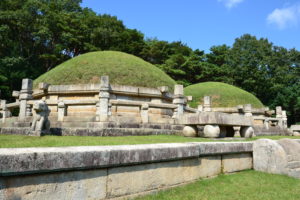
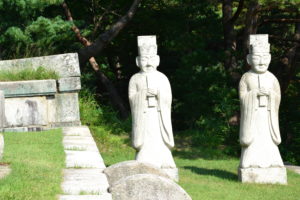
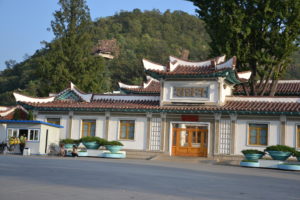
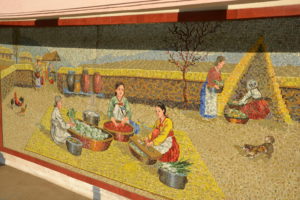
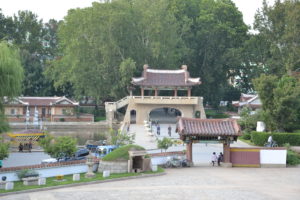
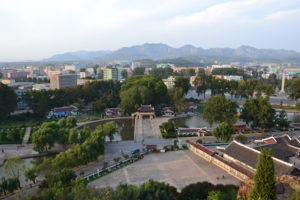
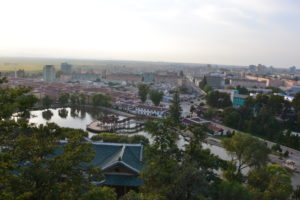
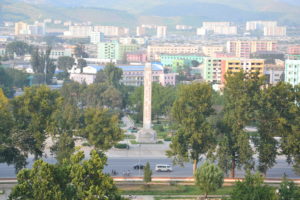
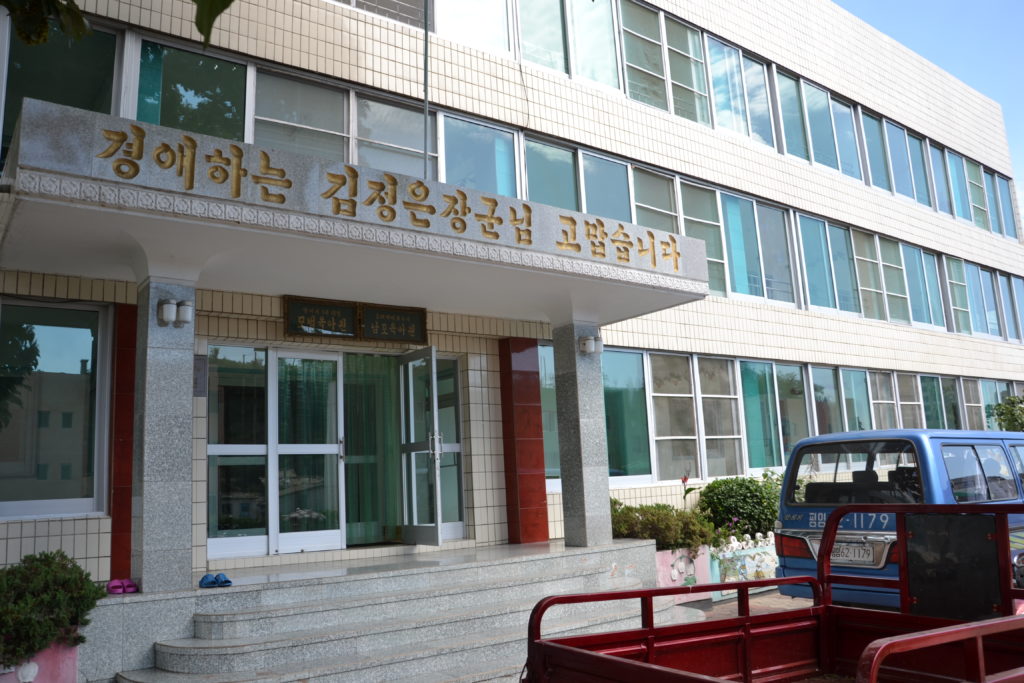
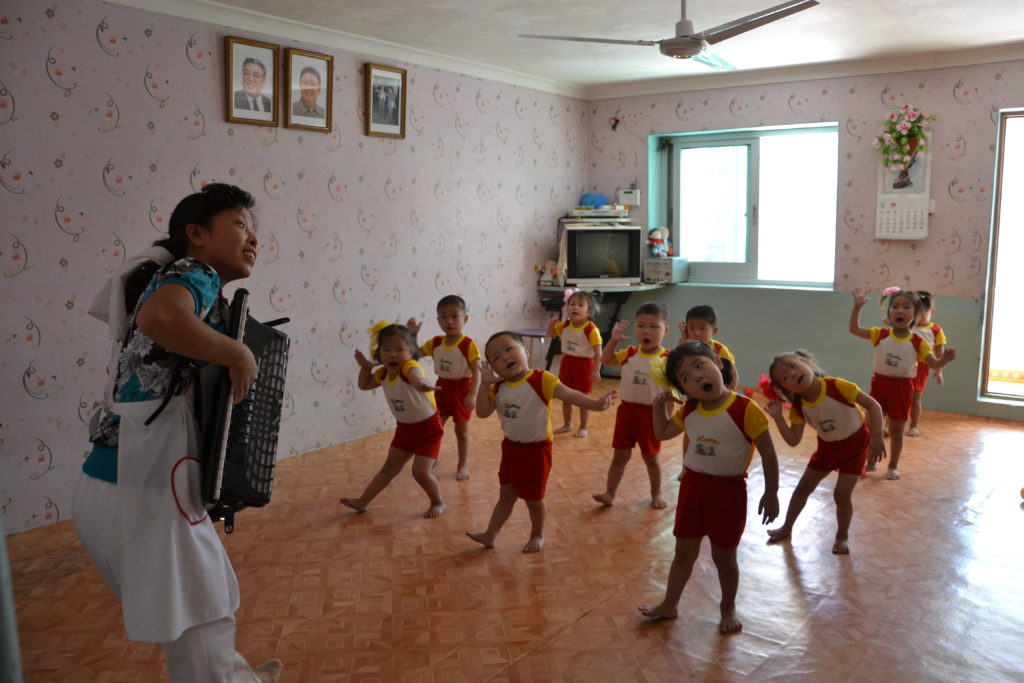
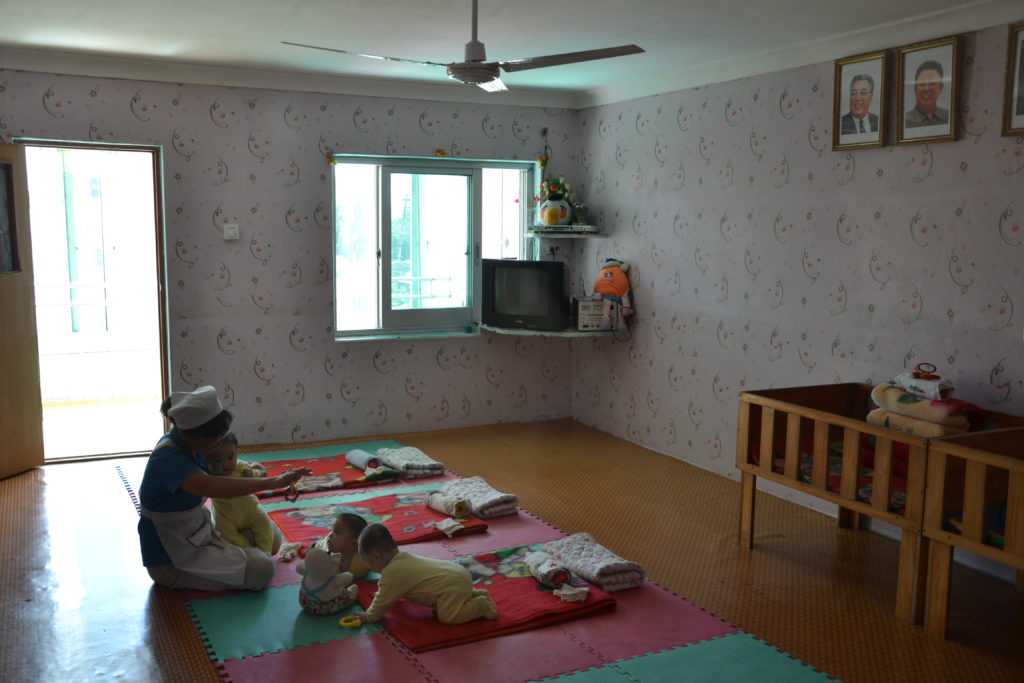
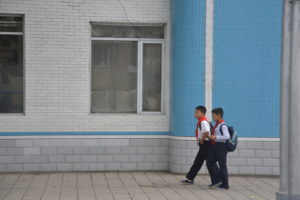
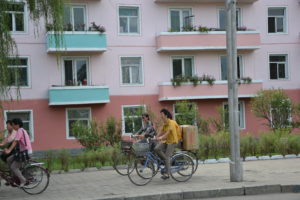
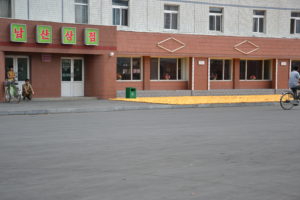
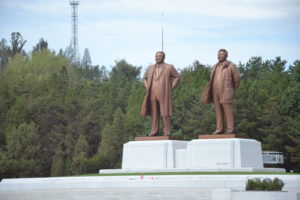
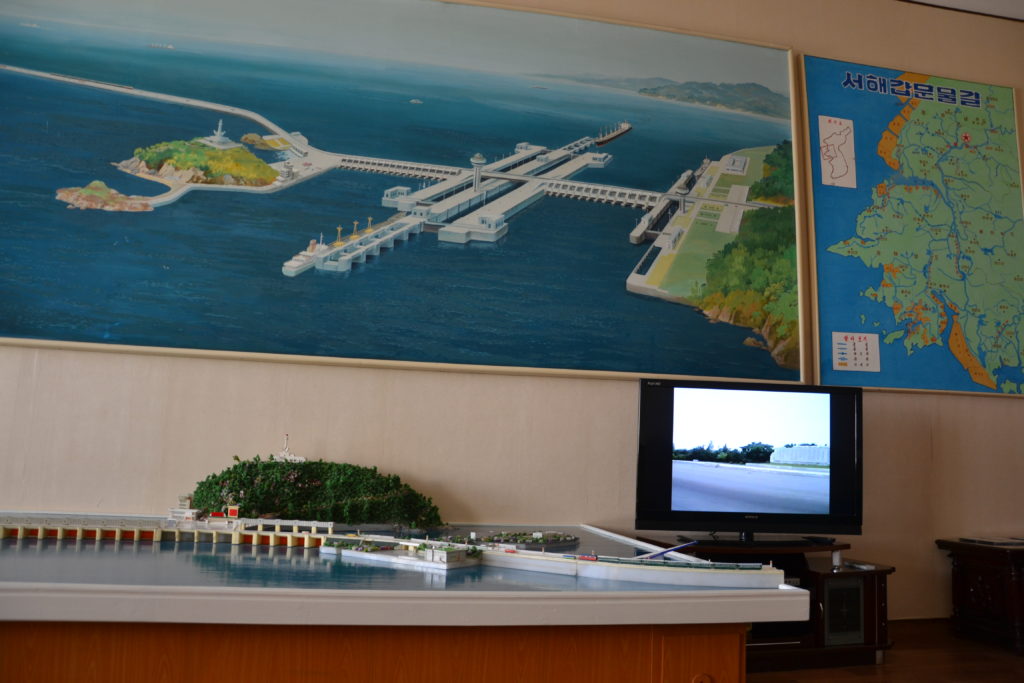
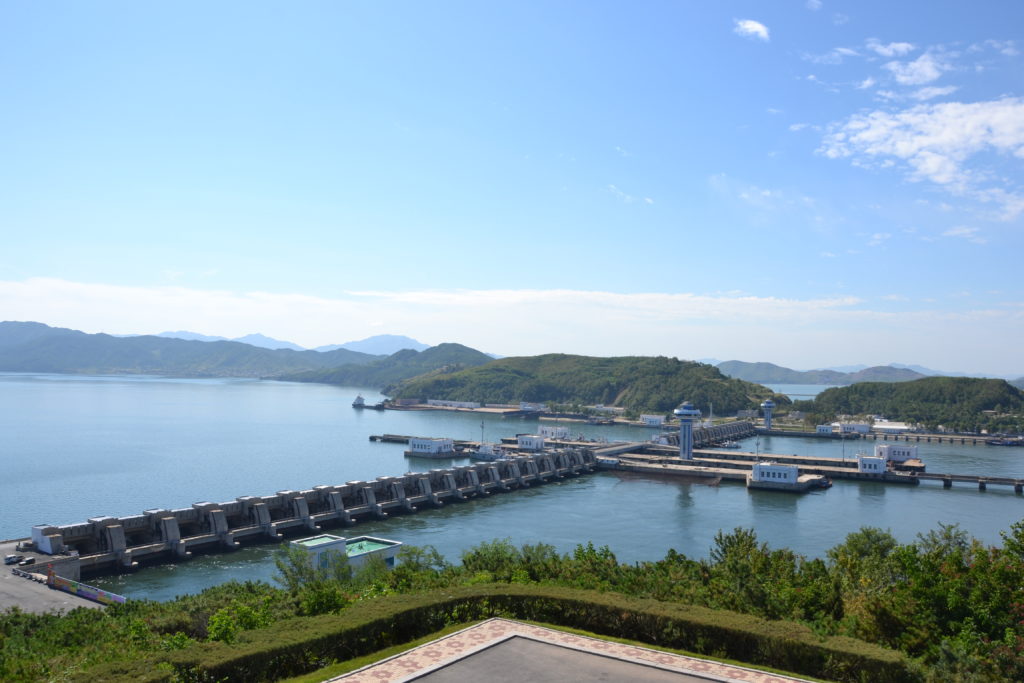
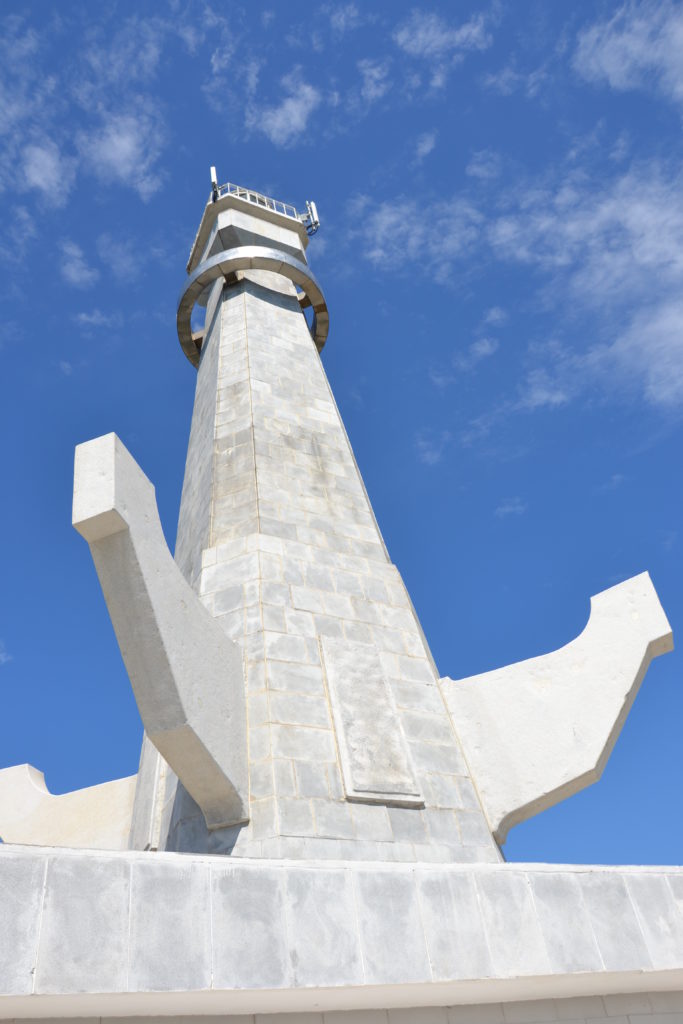
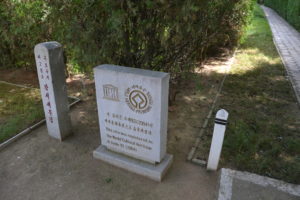
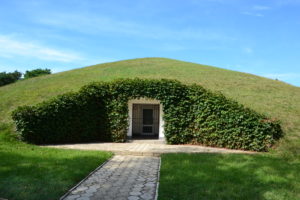
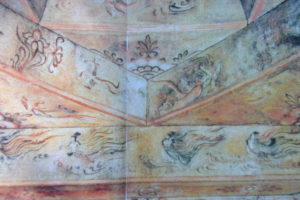
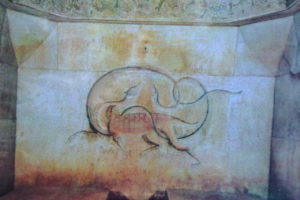
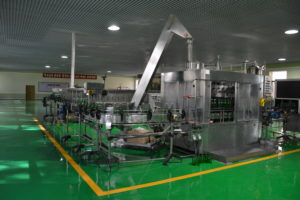
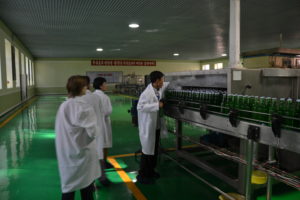
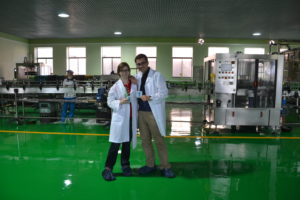
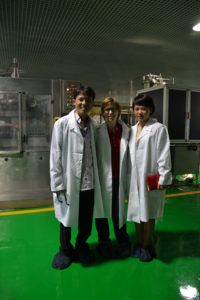
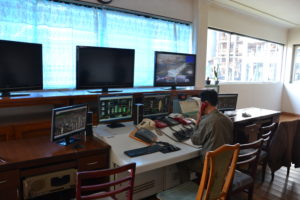
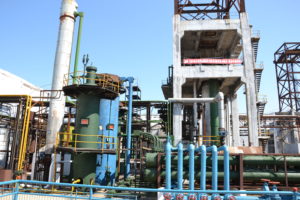
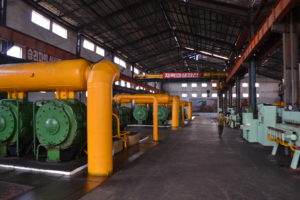
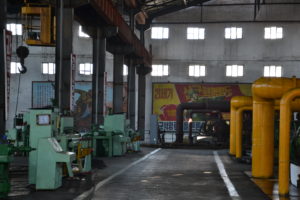
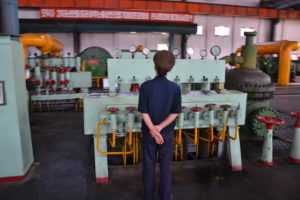
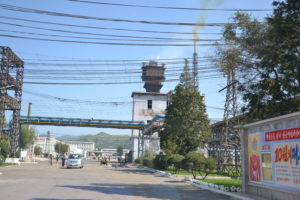
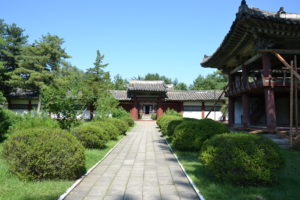
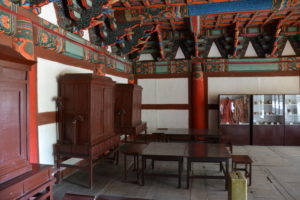
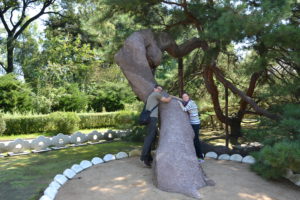
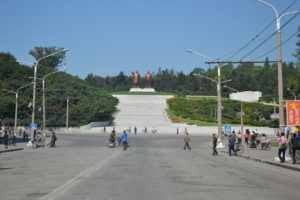
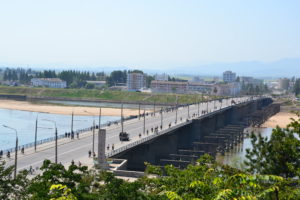
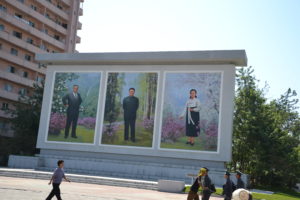
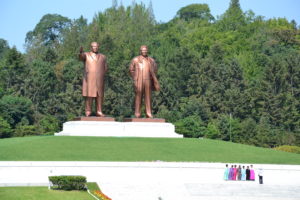
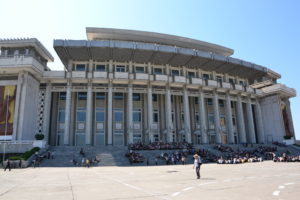
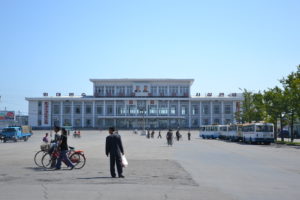
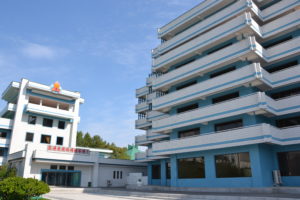
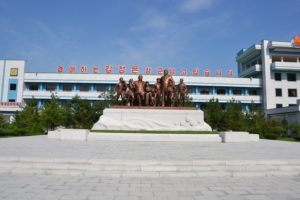
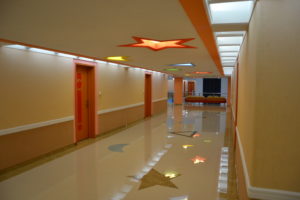
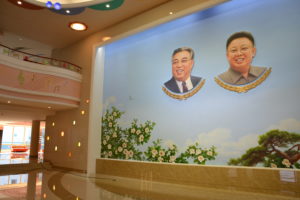
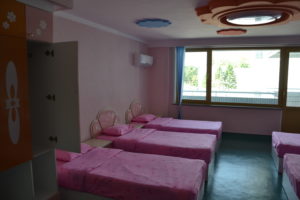
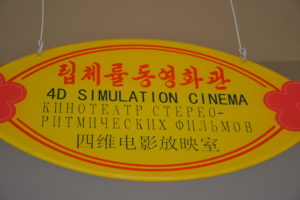
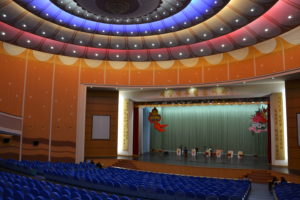
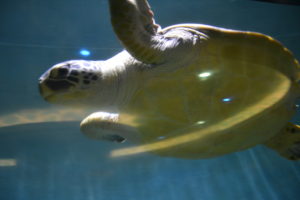
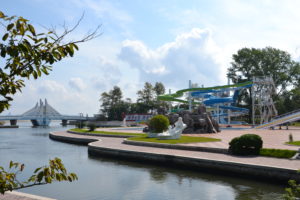
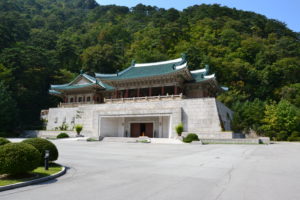
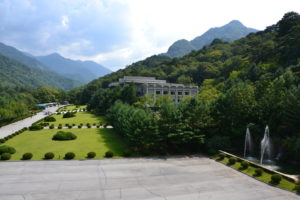
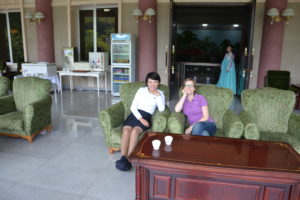
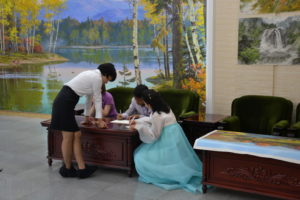
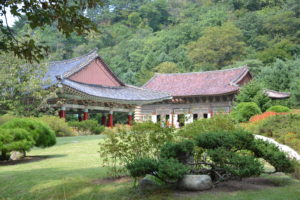
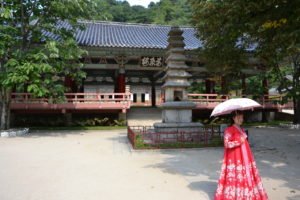
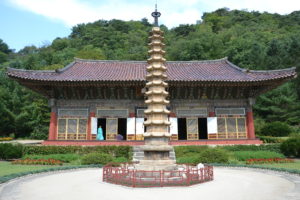
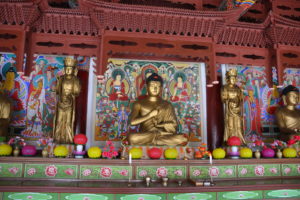
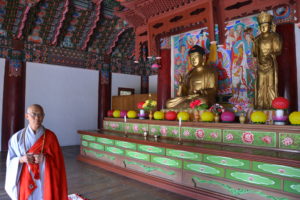
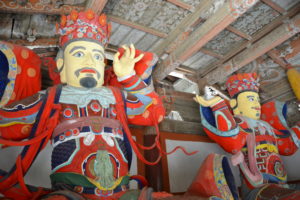
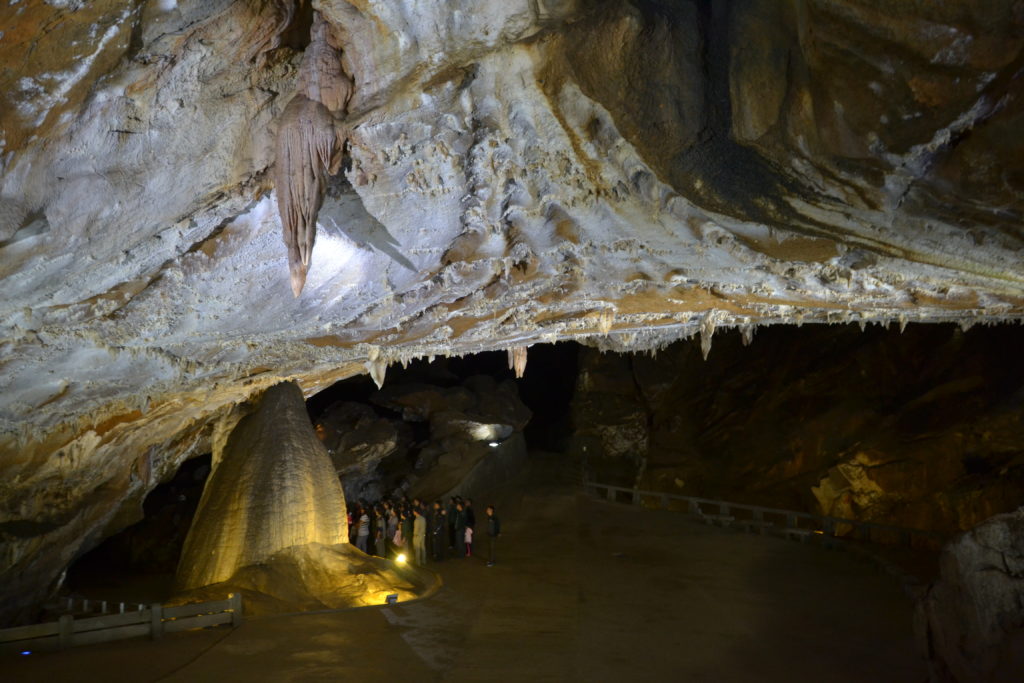
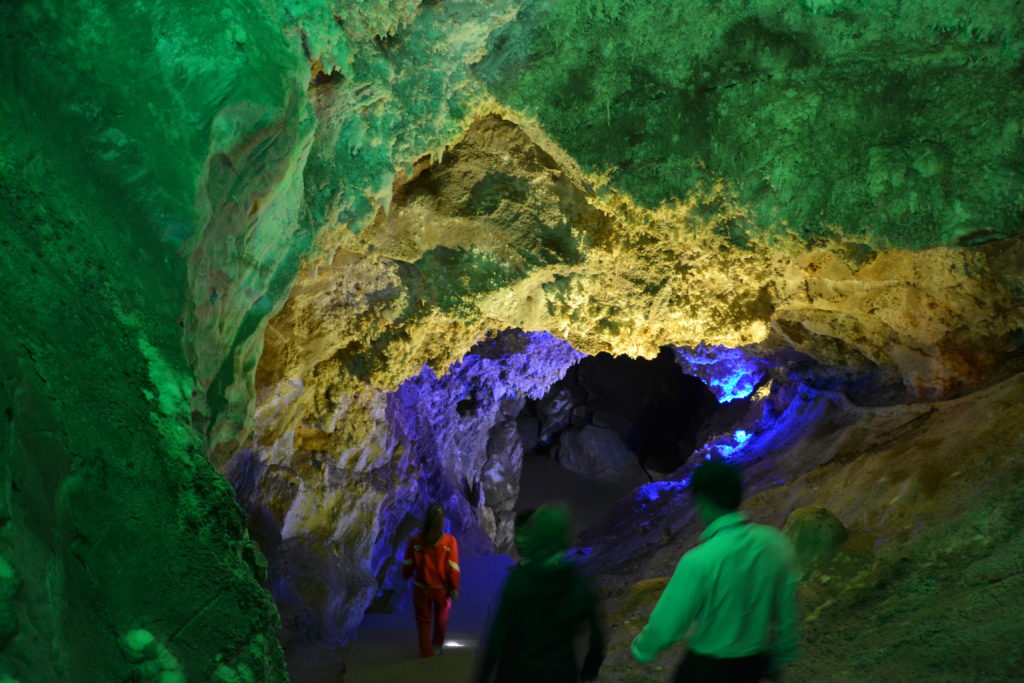
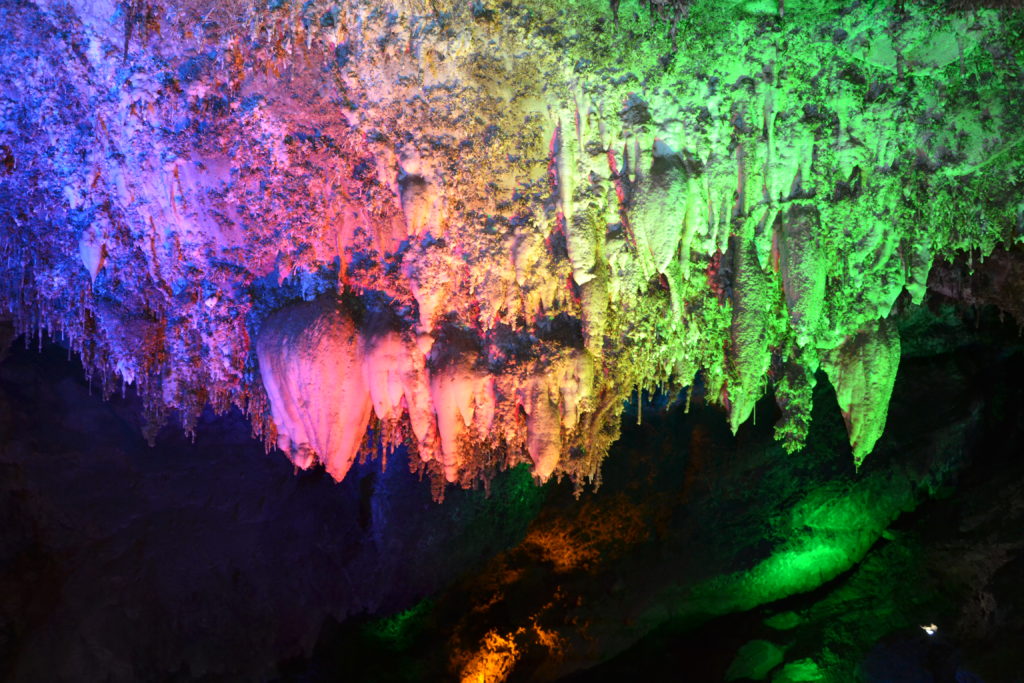
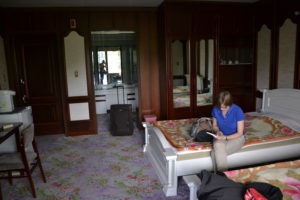
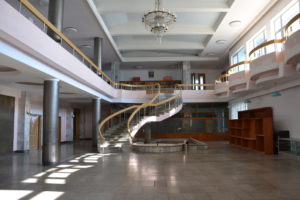
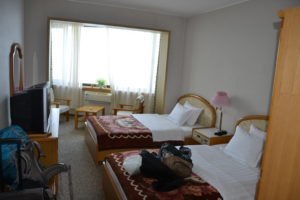
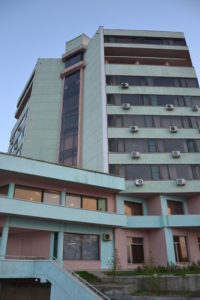
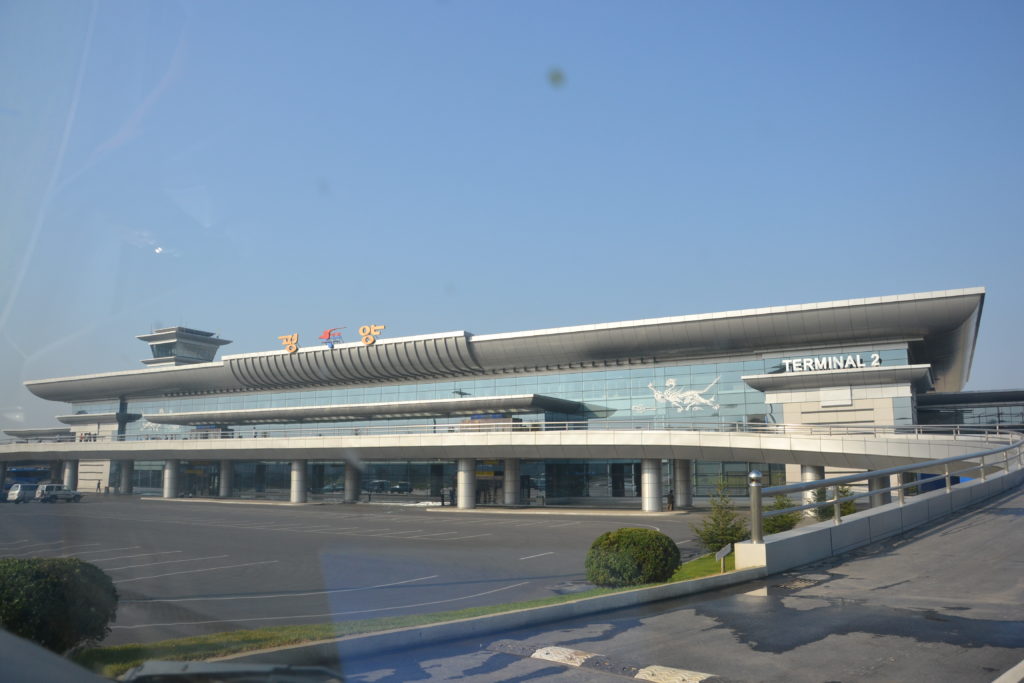
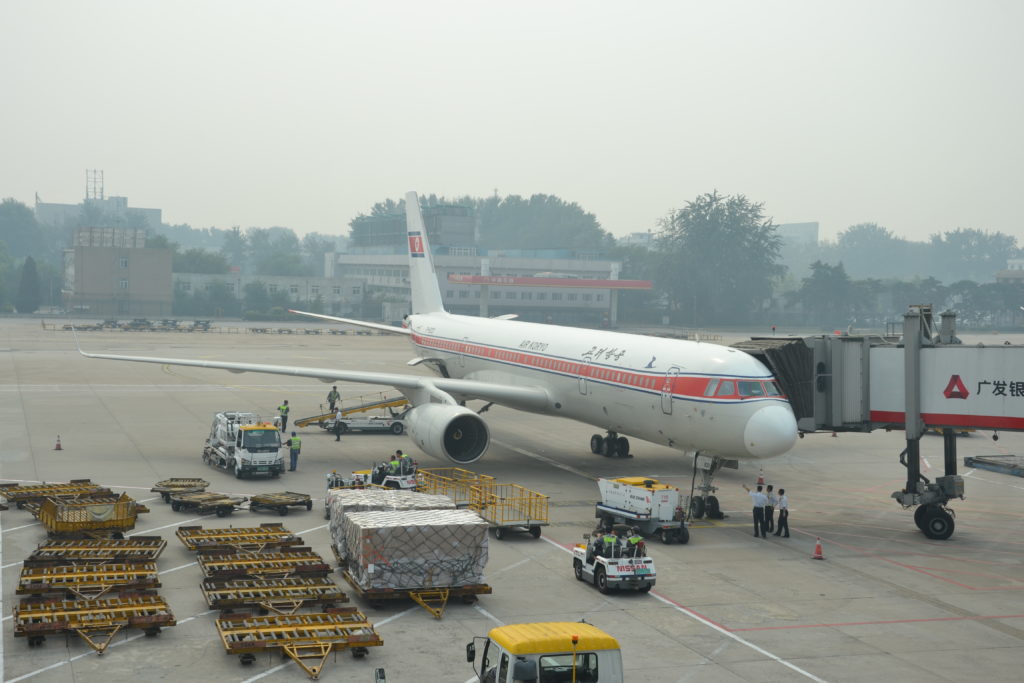
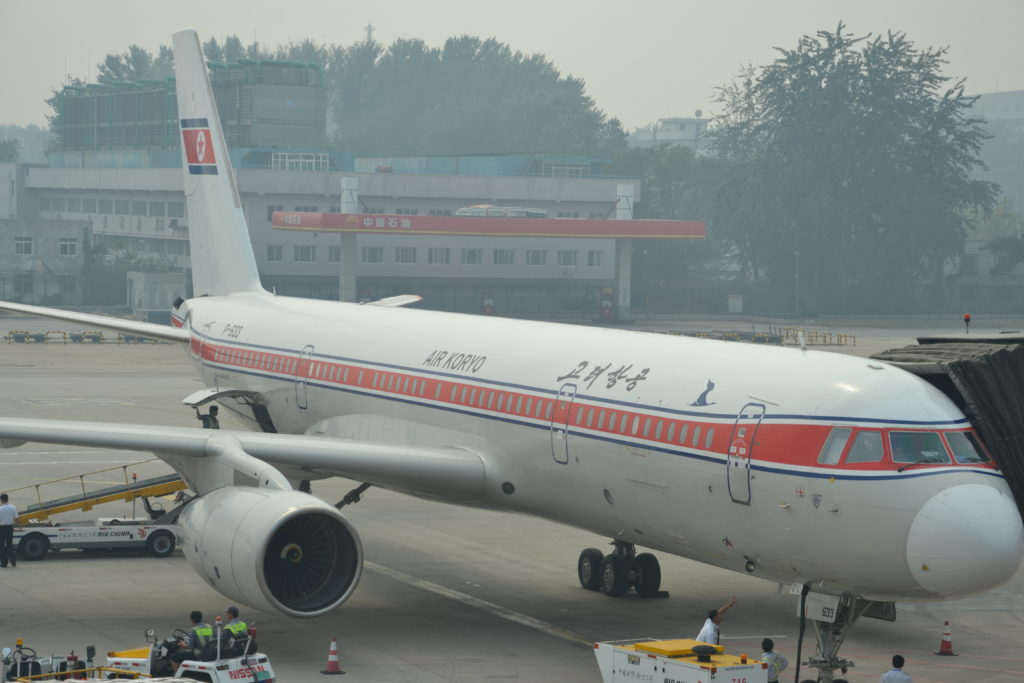
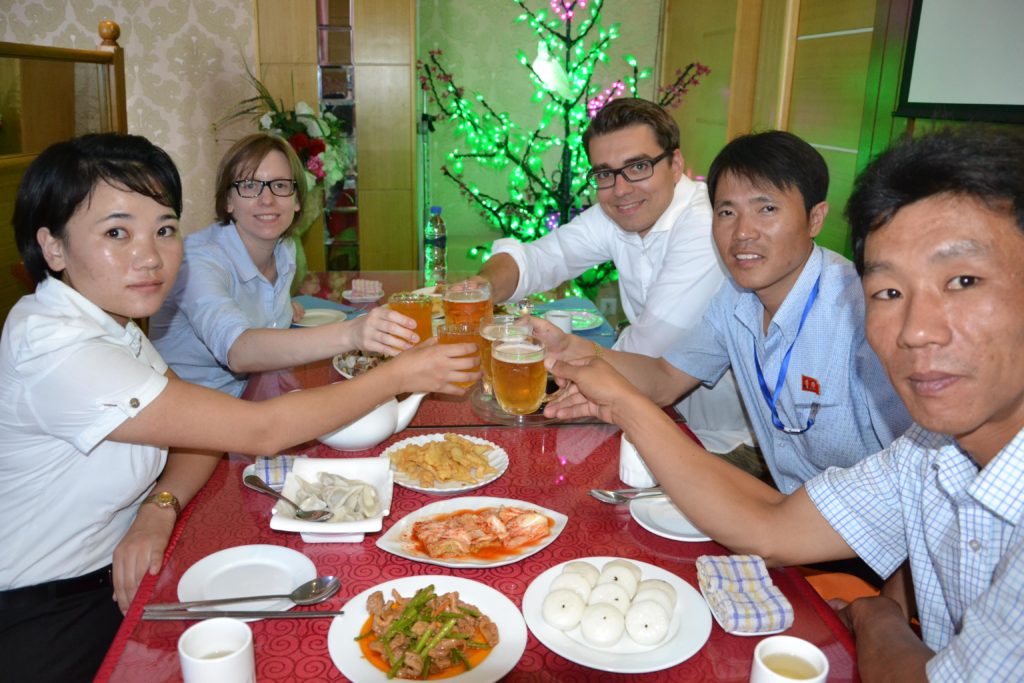
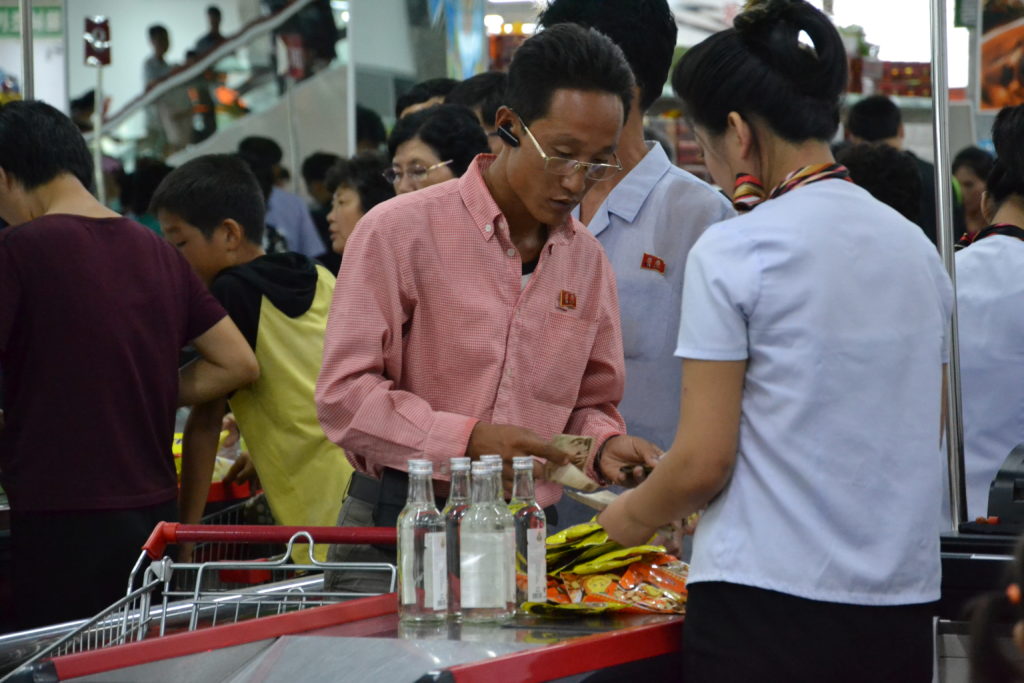
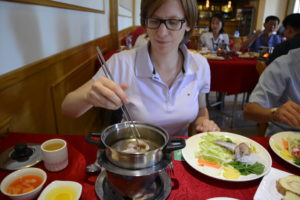
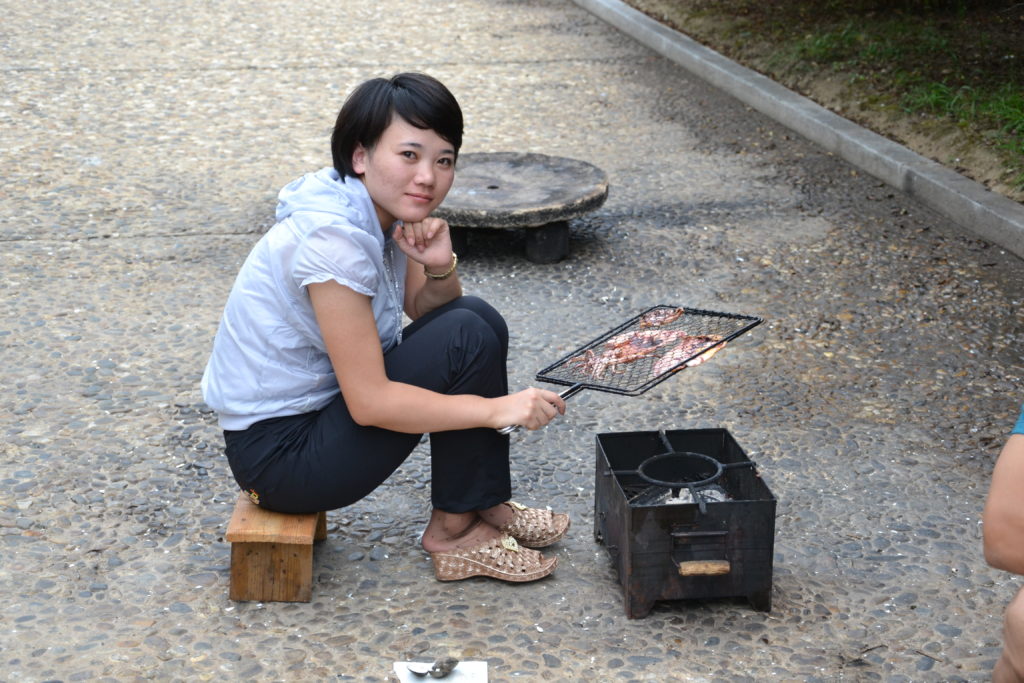
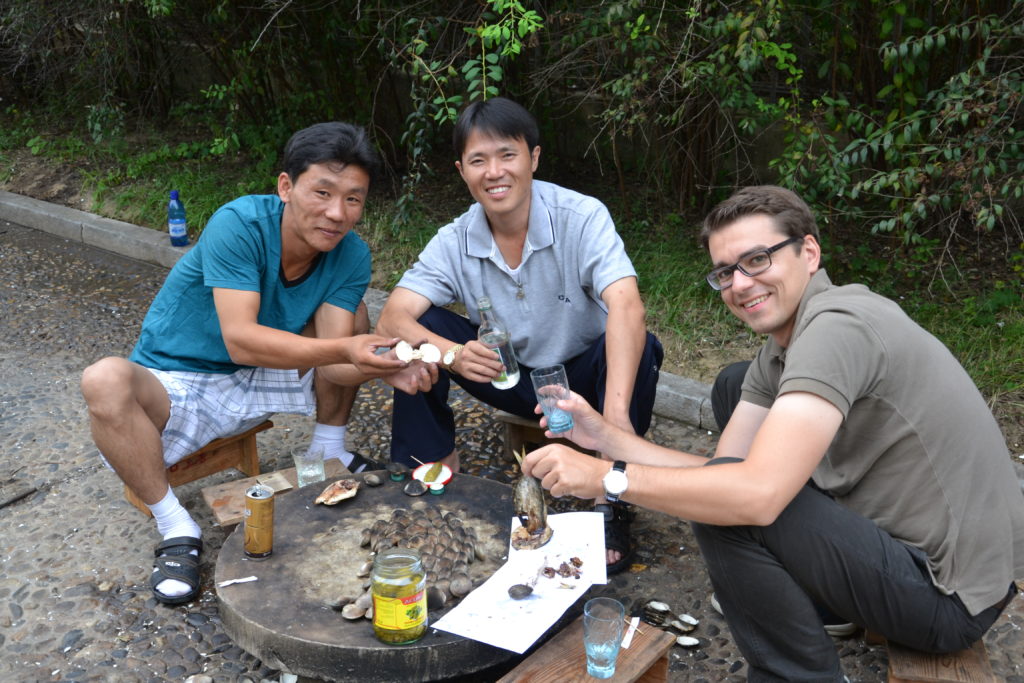
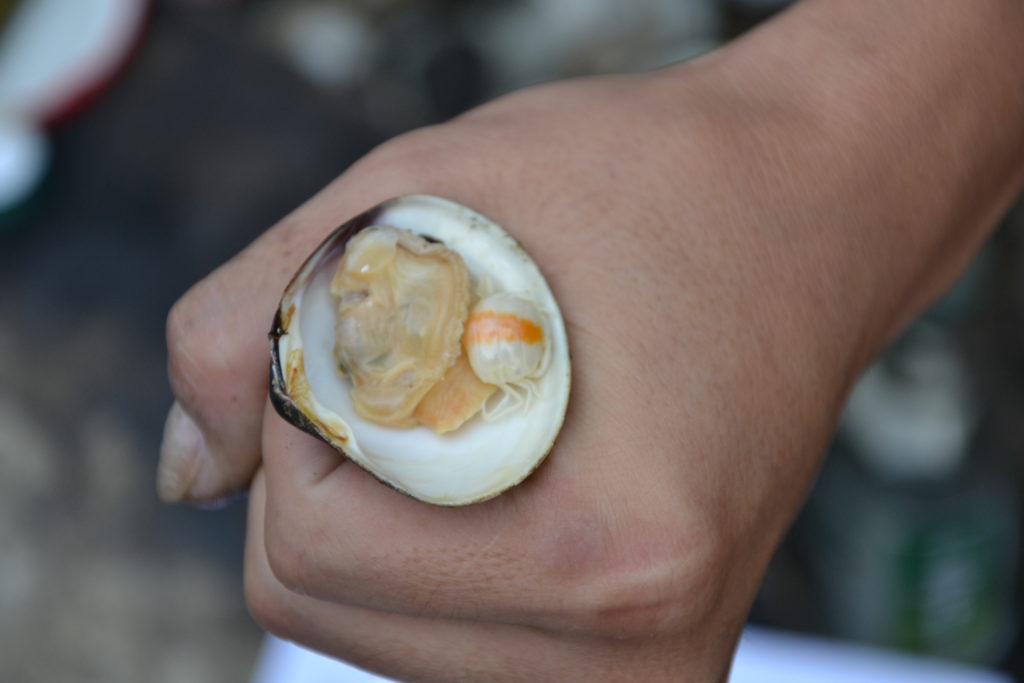




One thought on “North Korea (DPRK) Travel Tips”